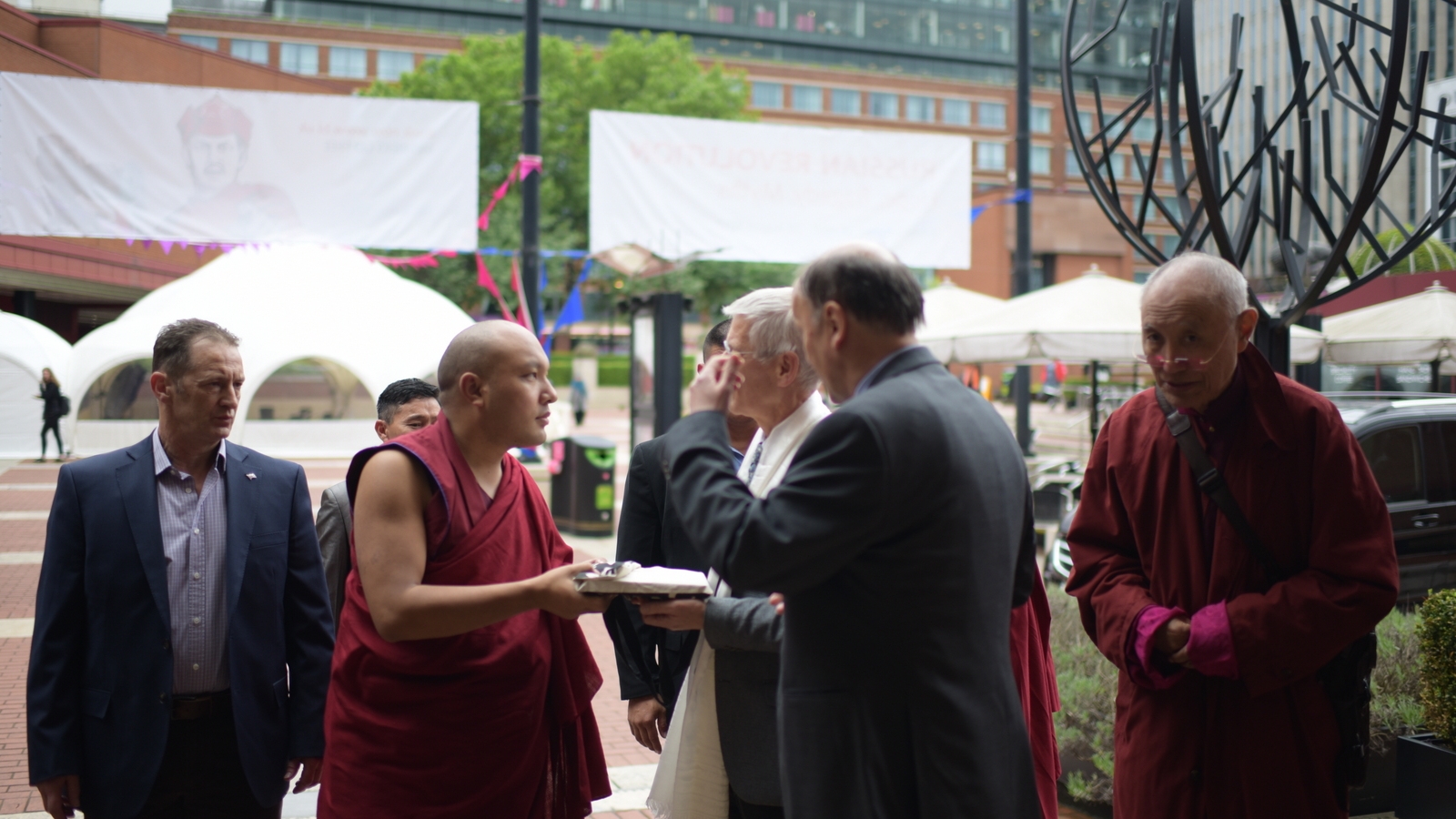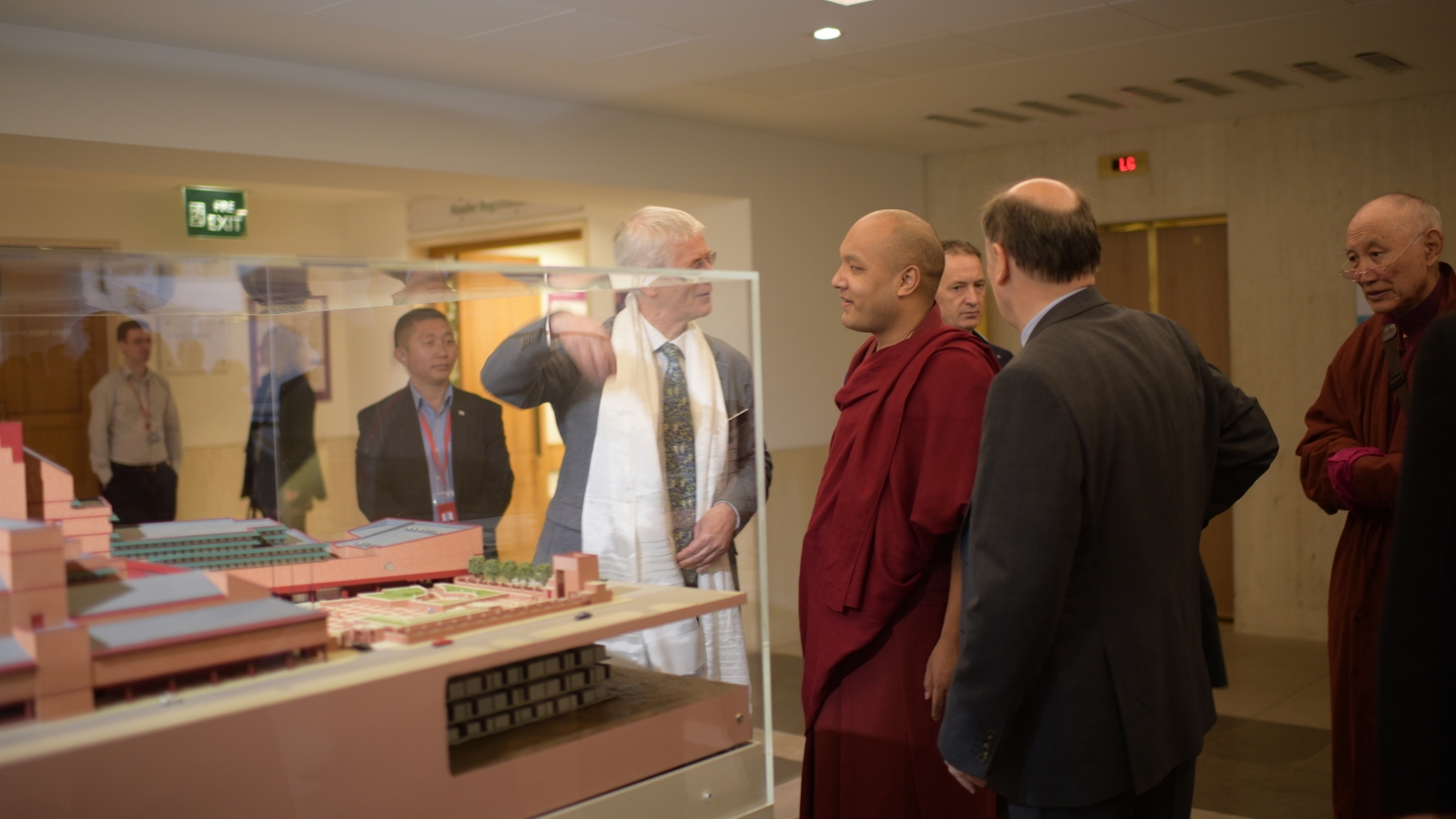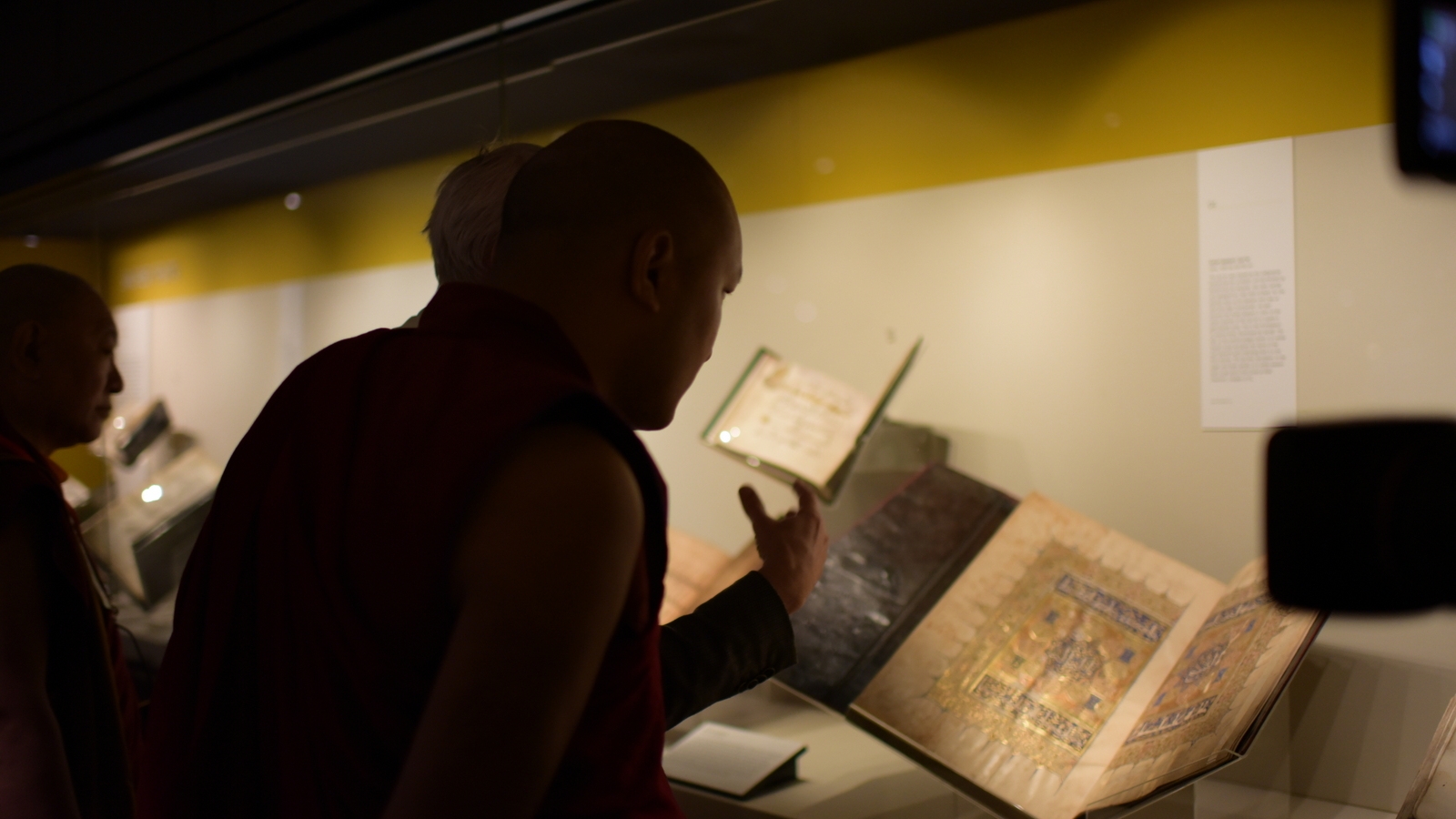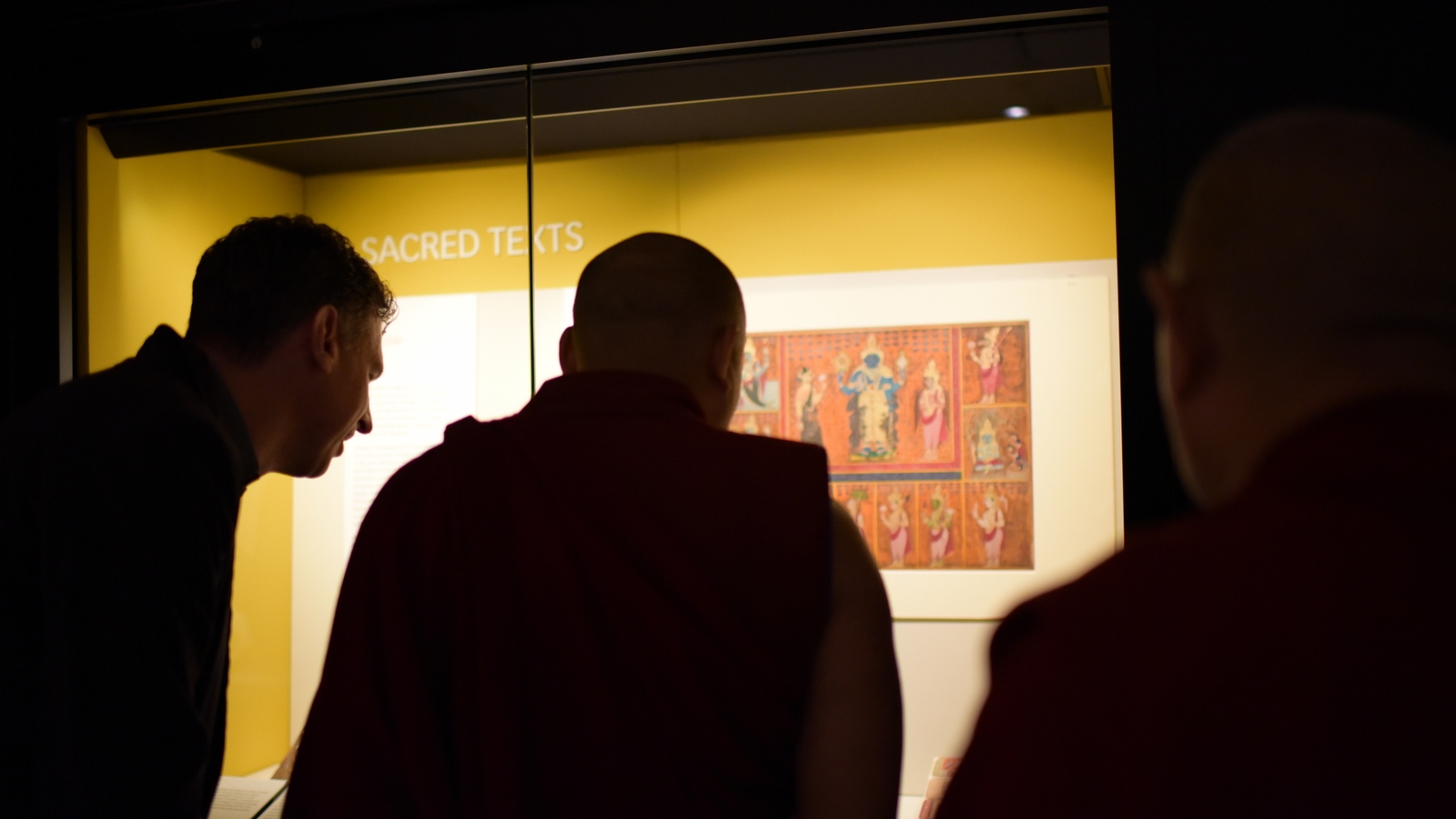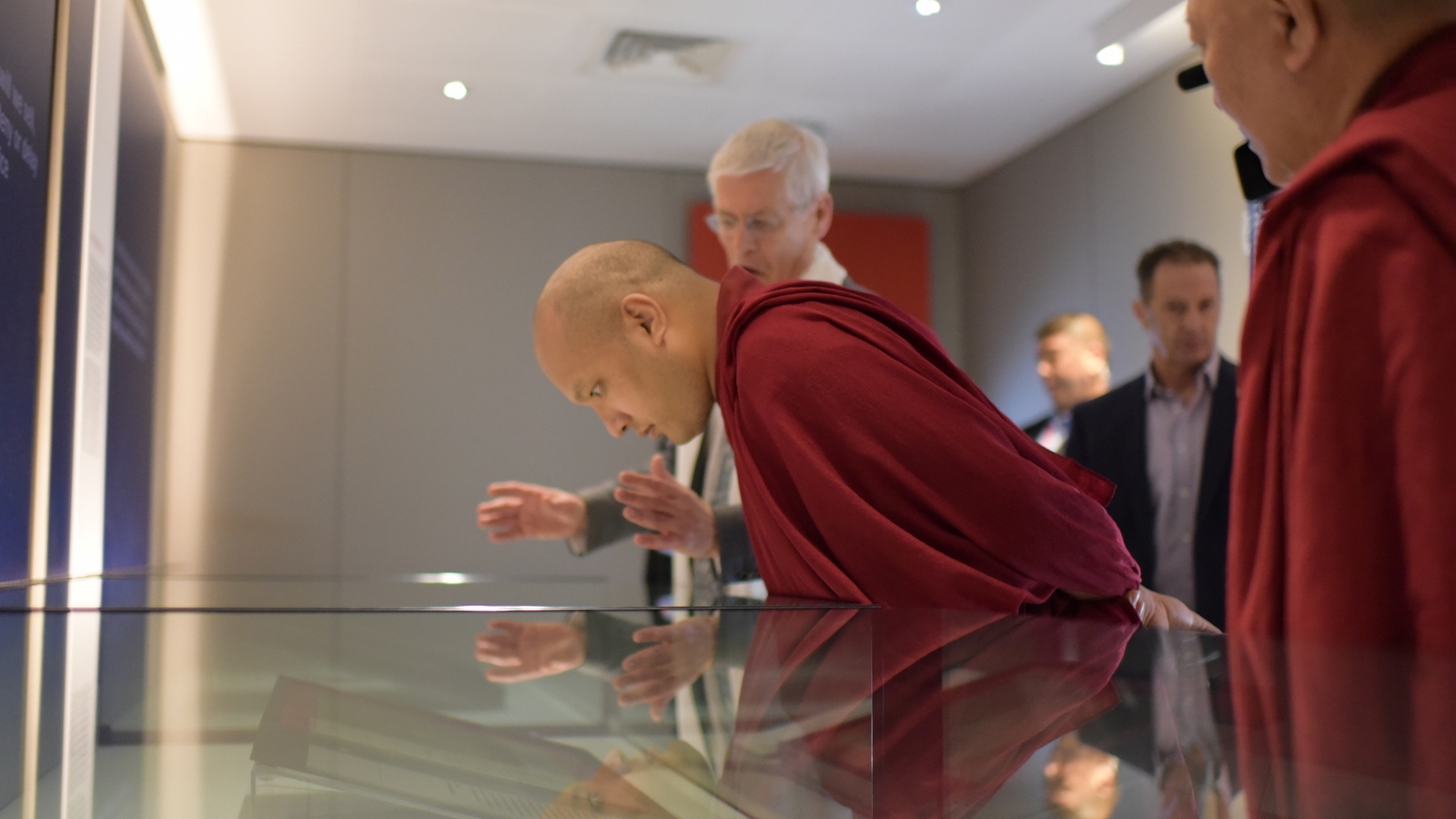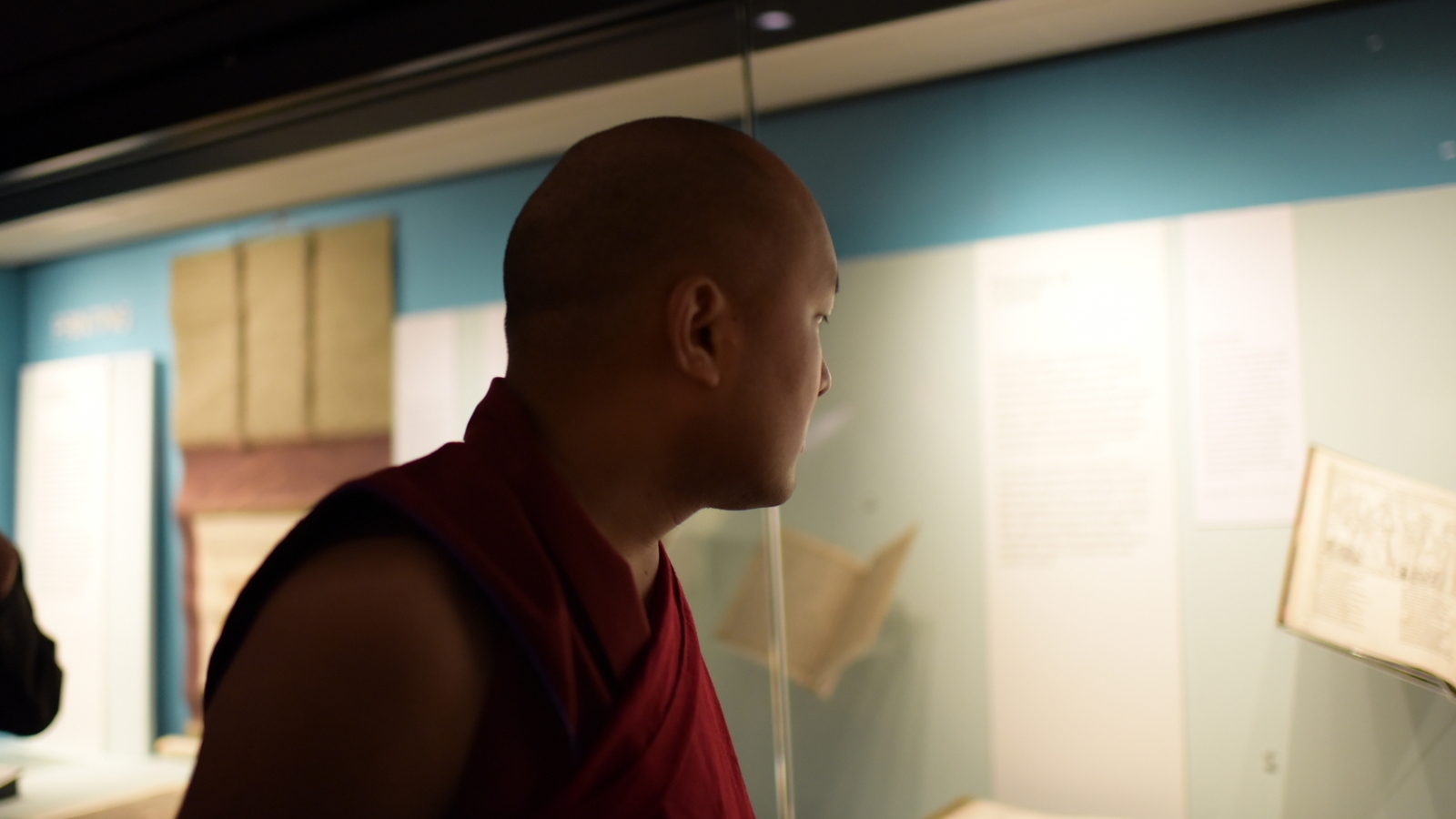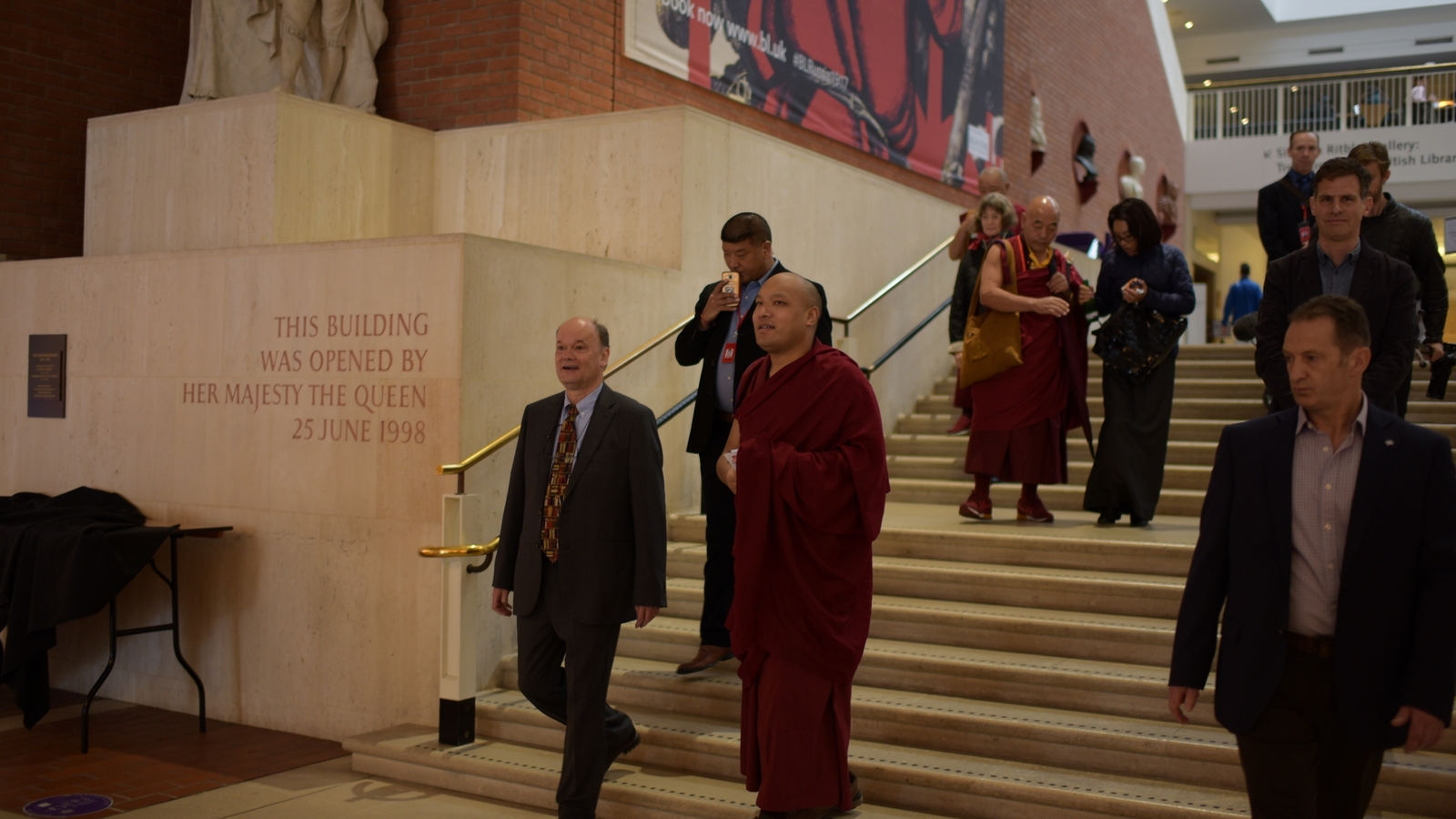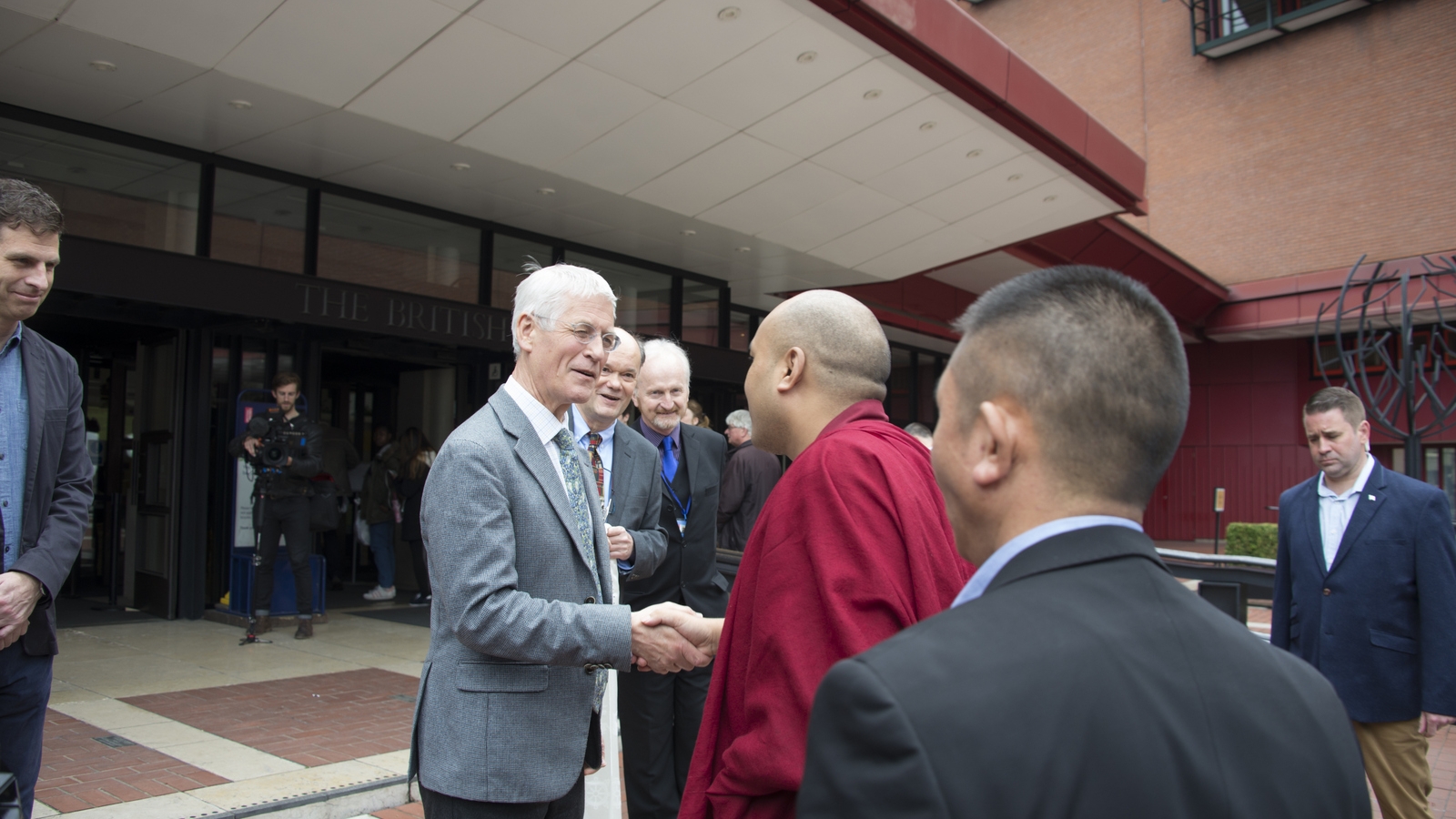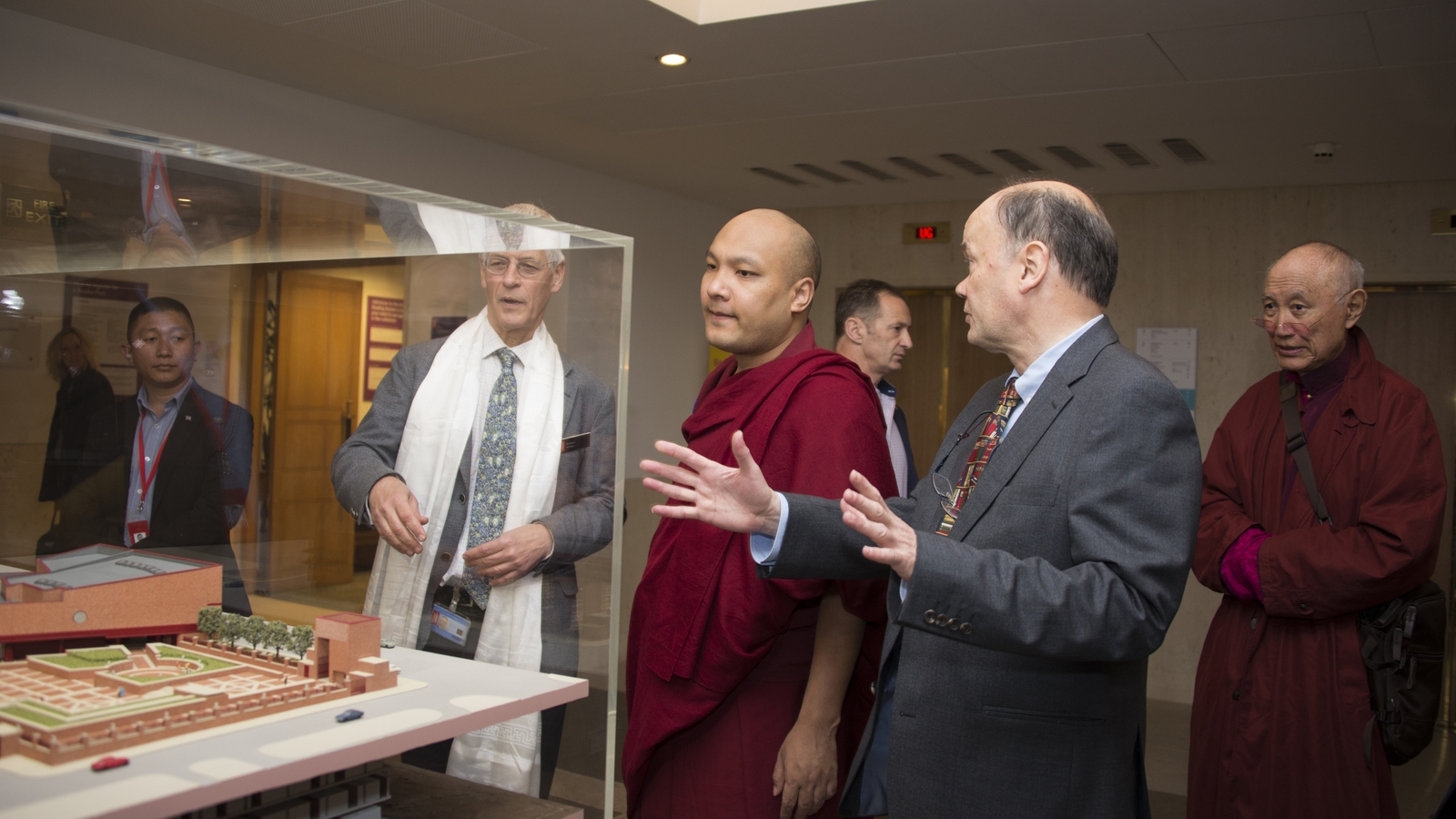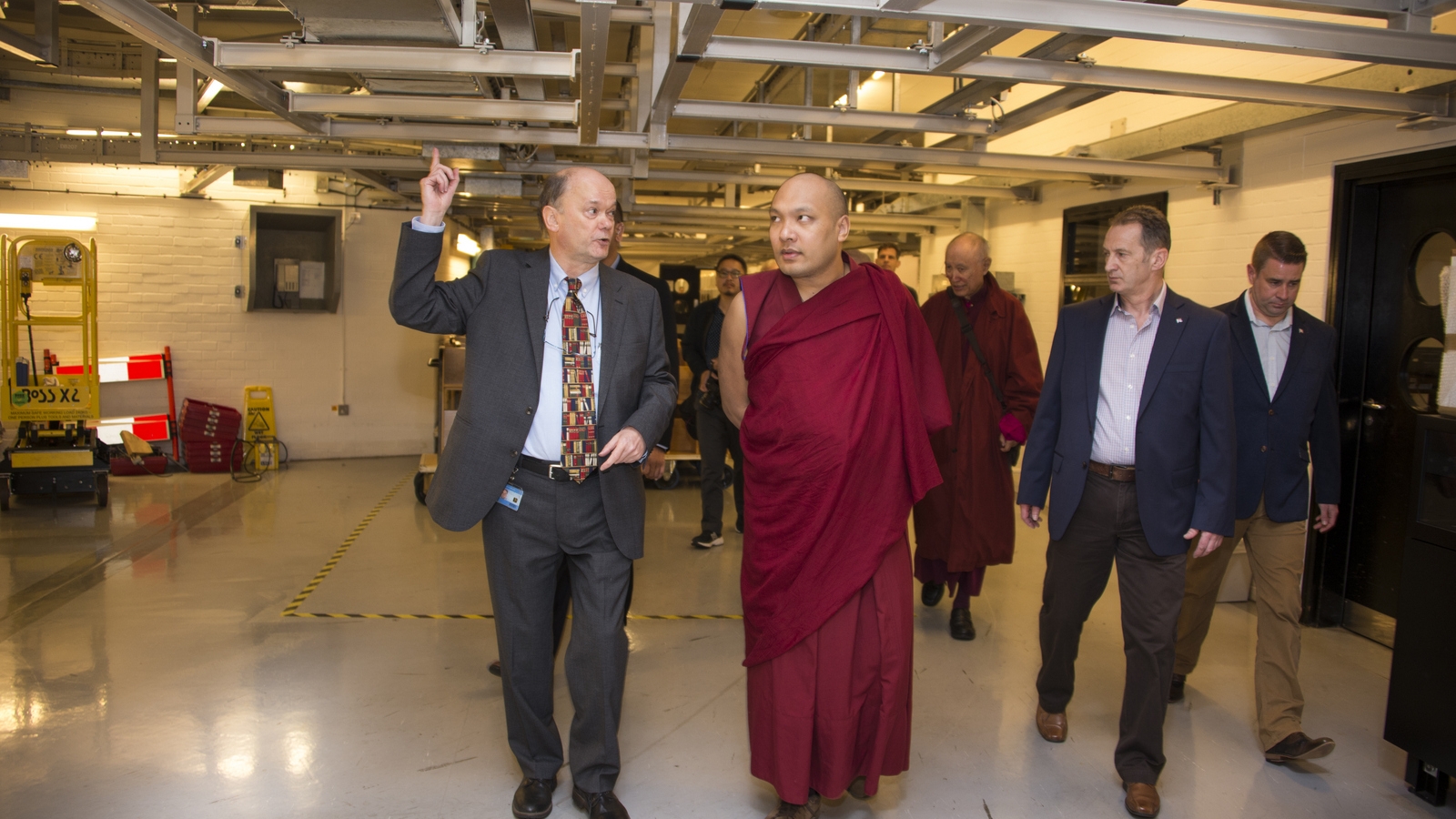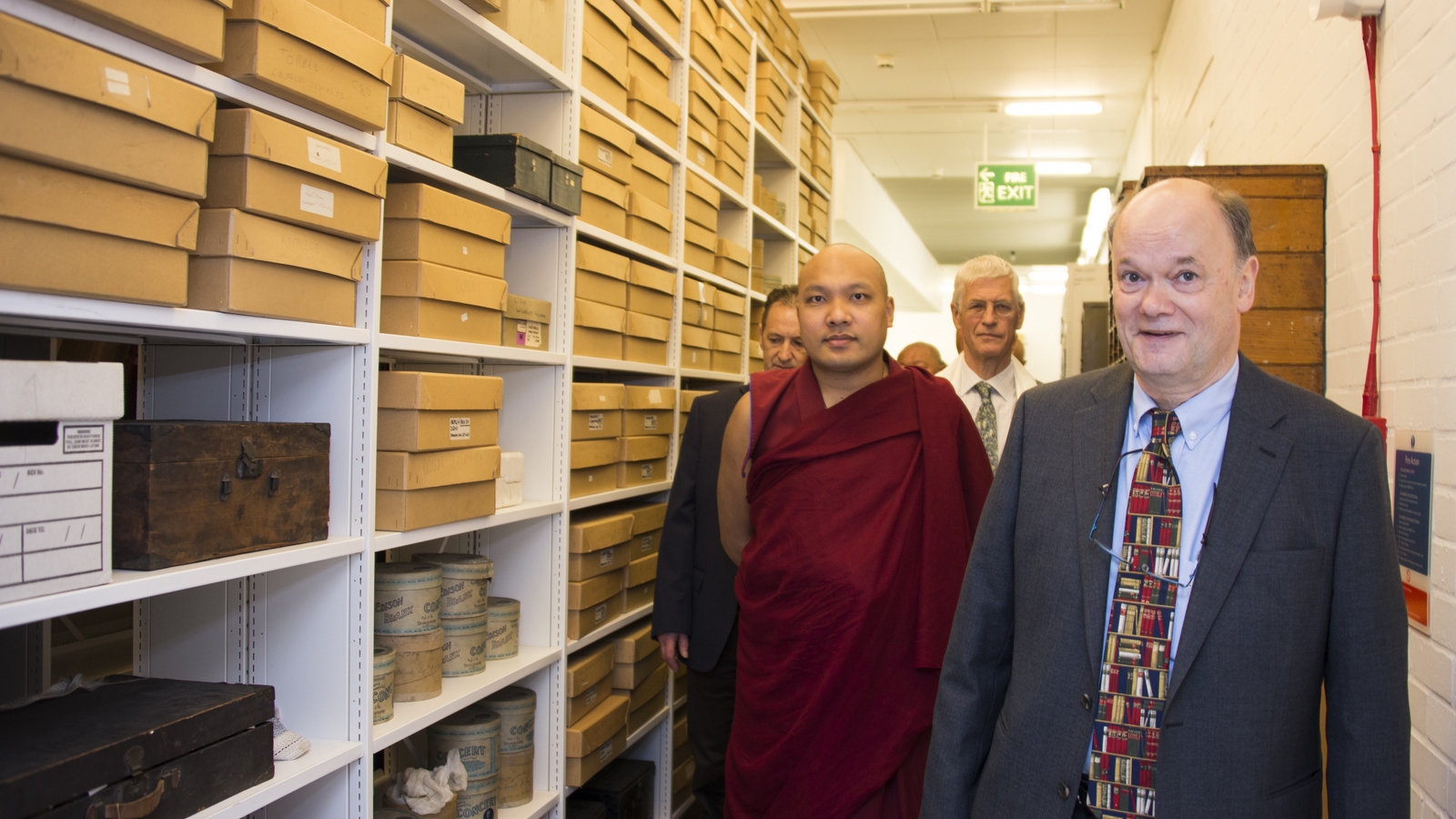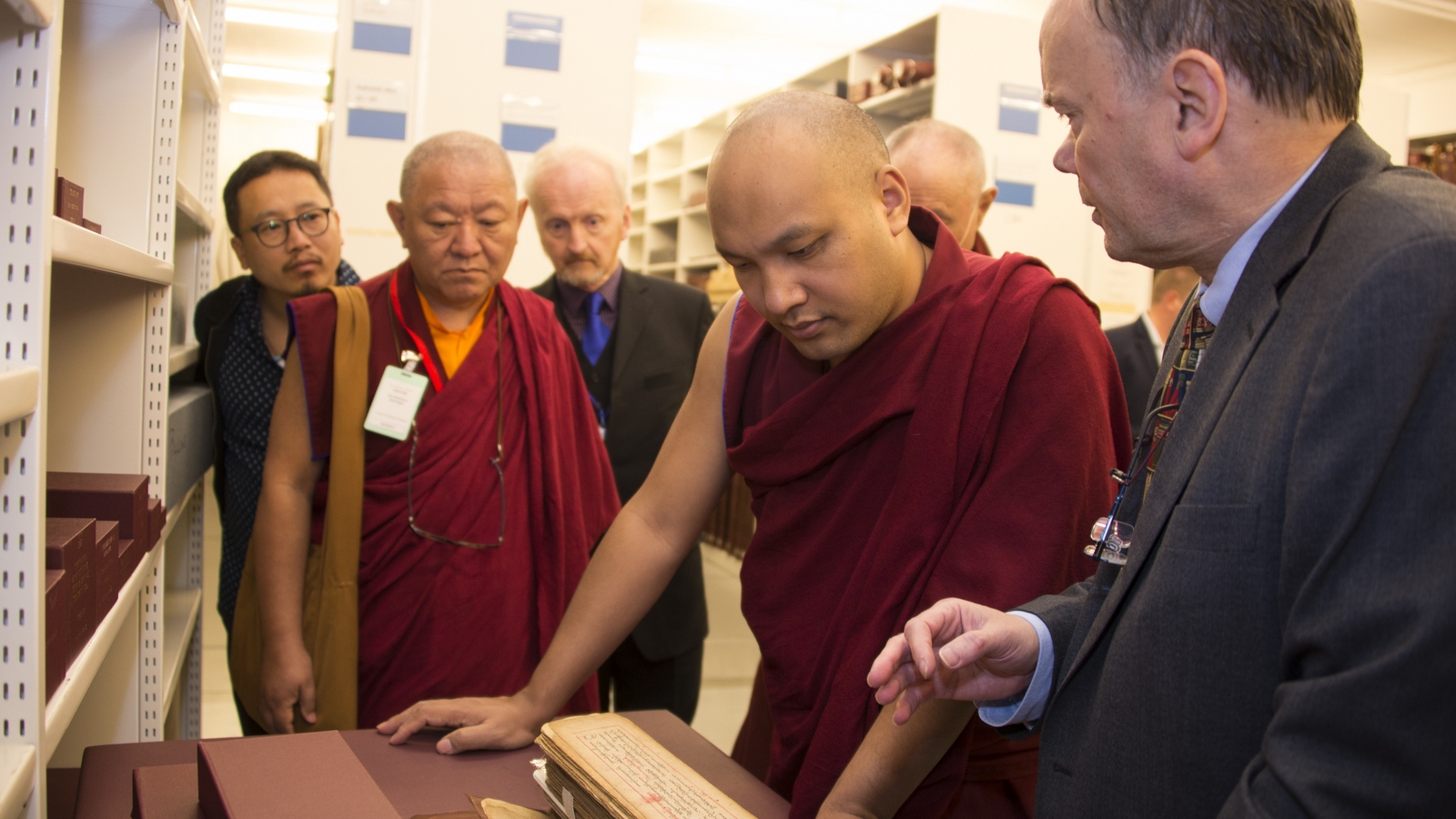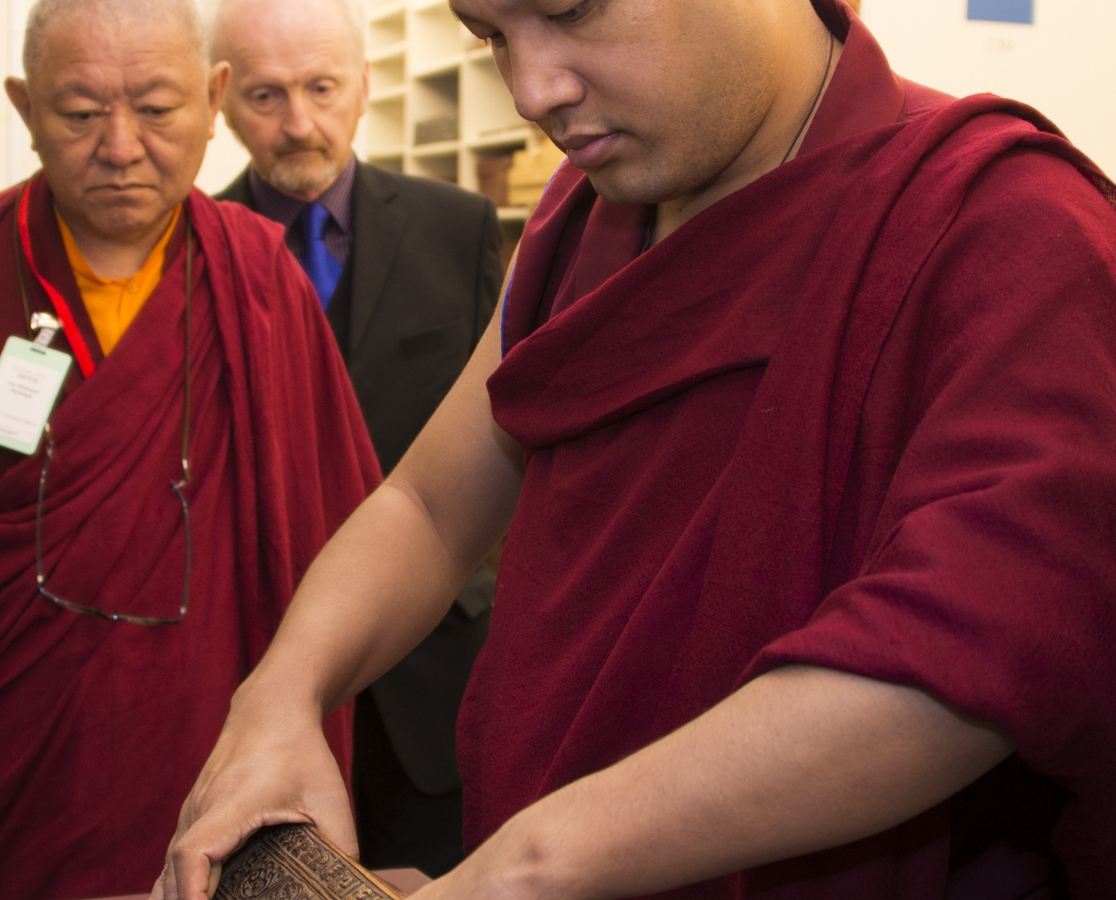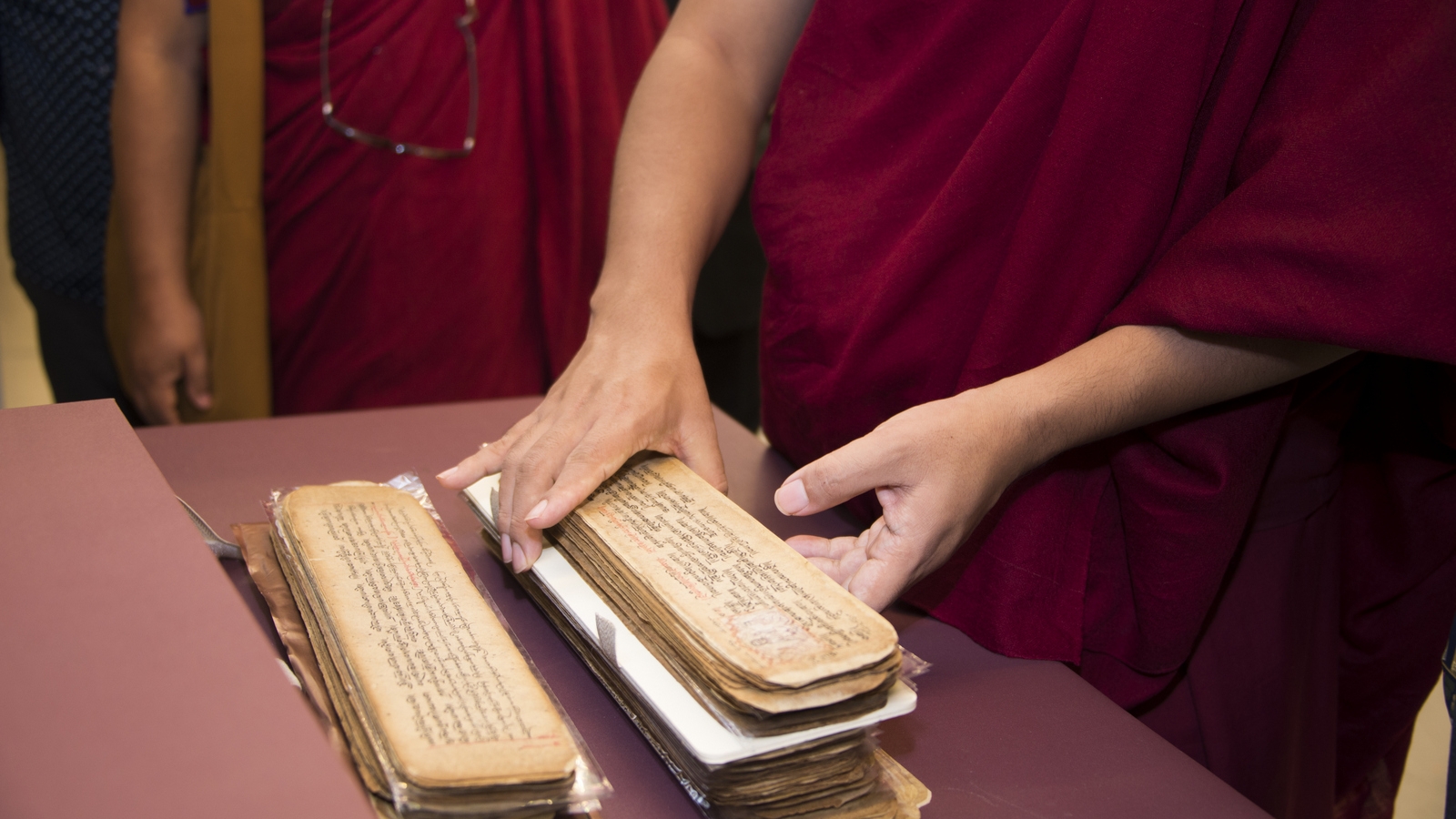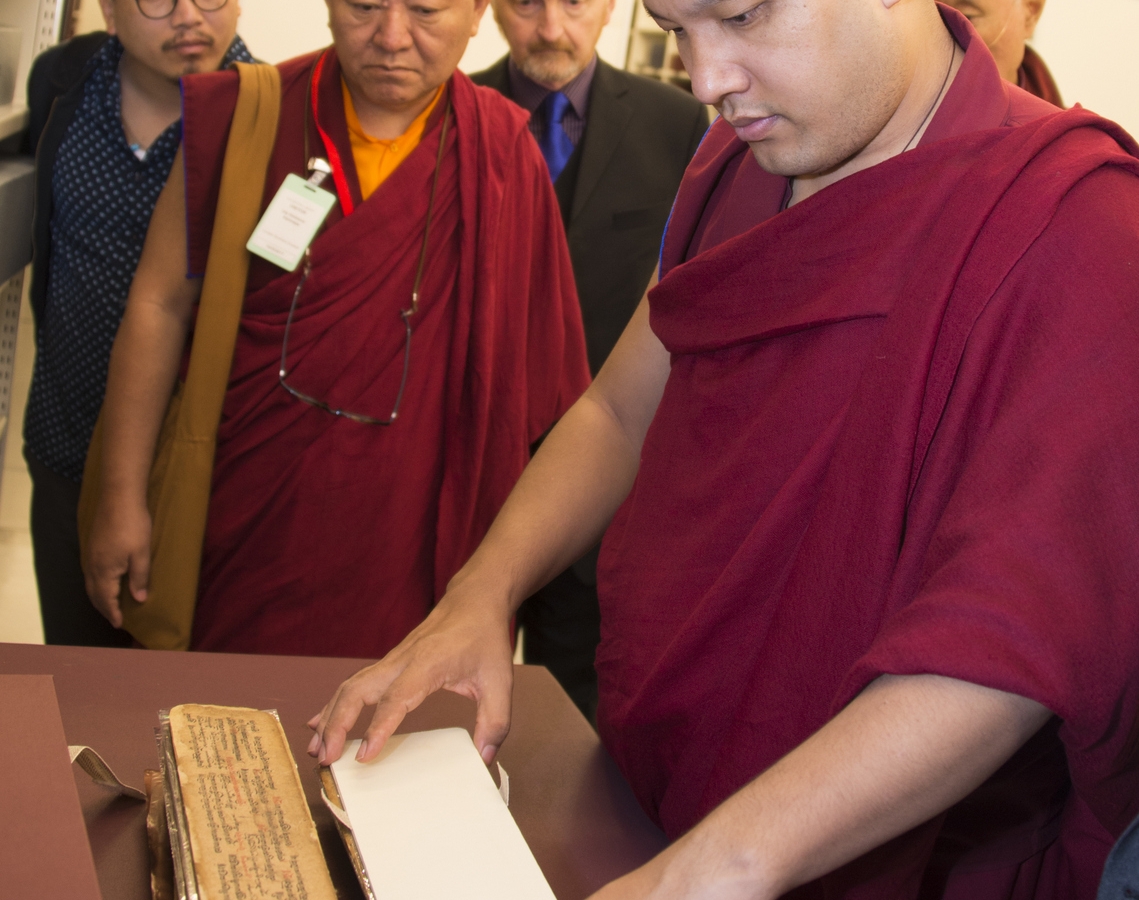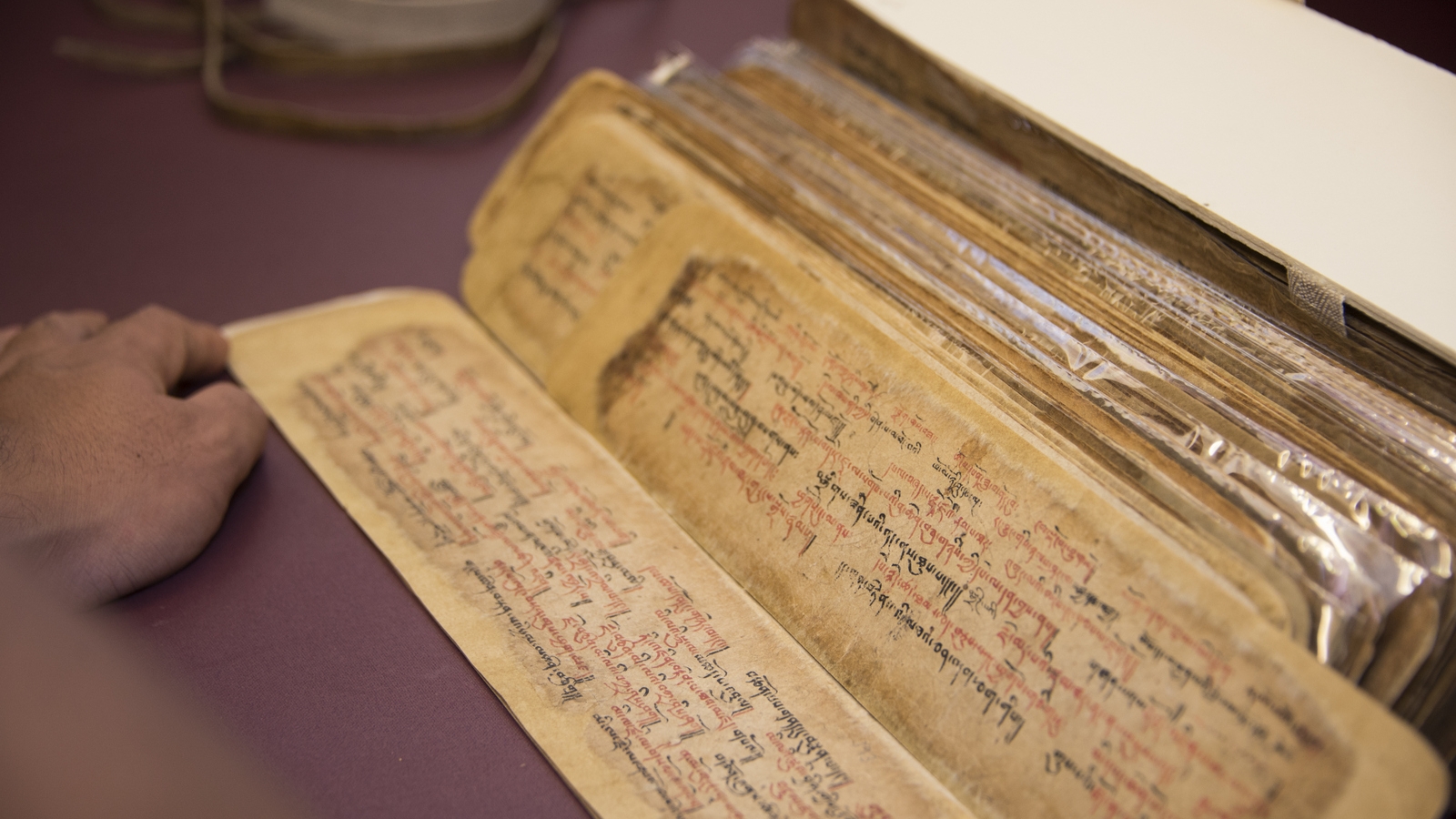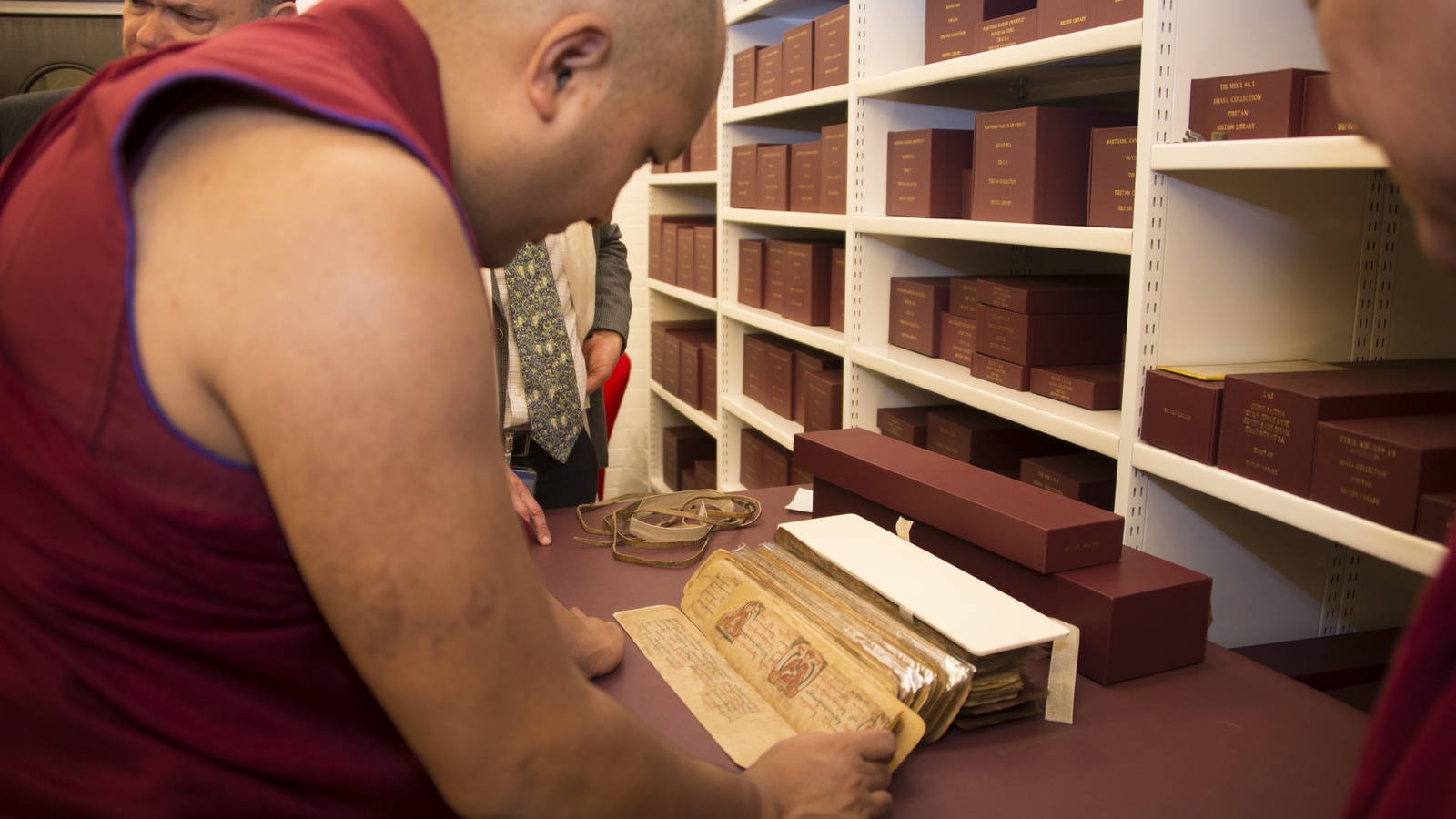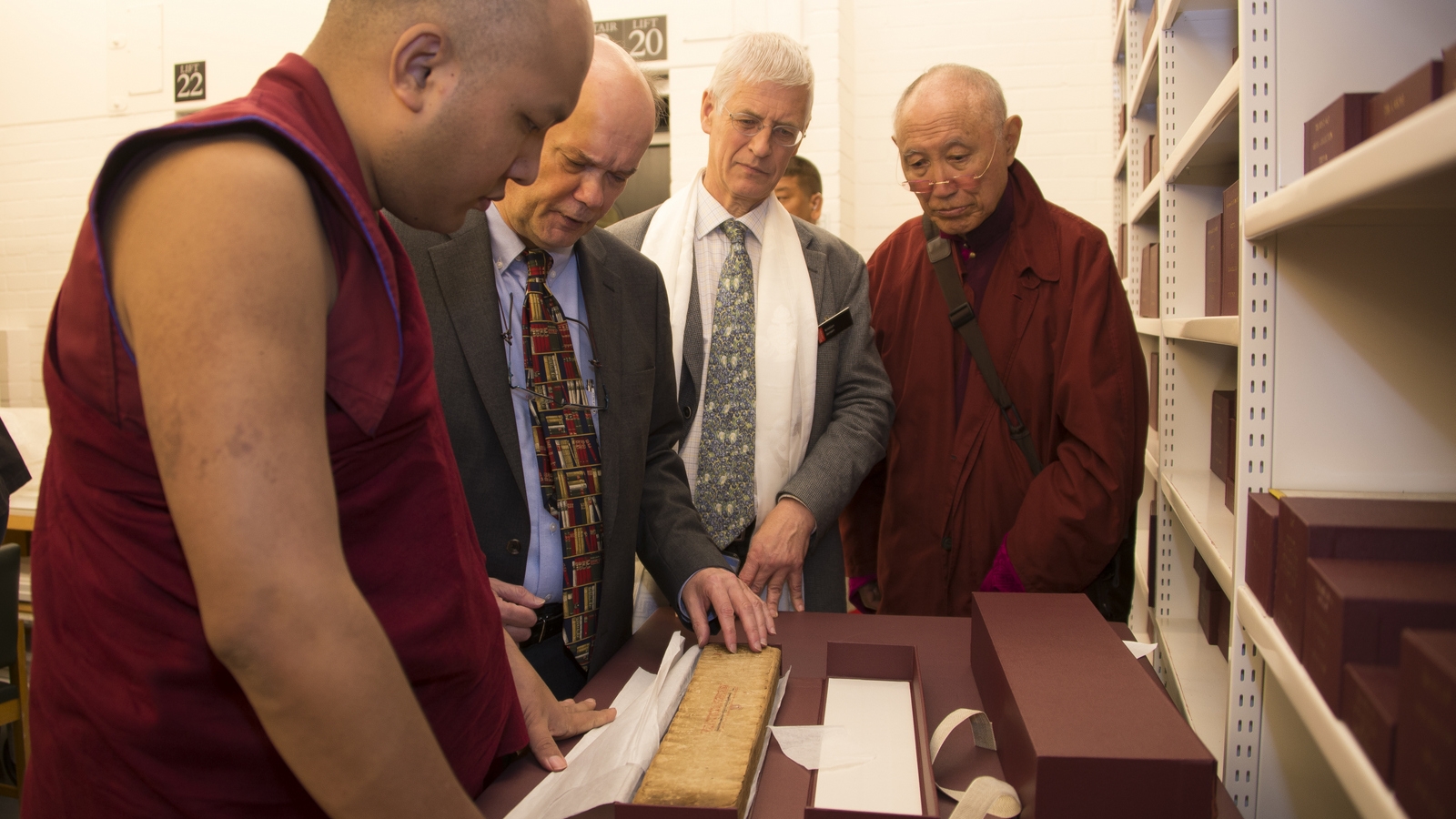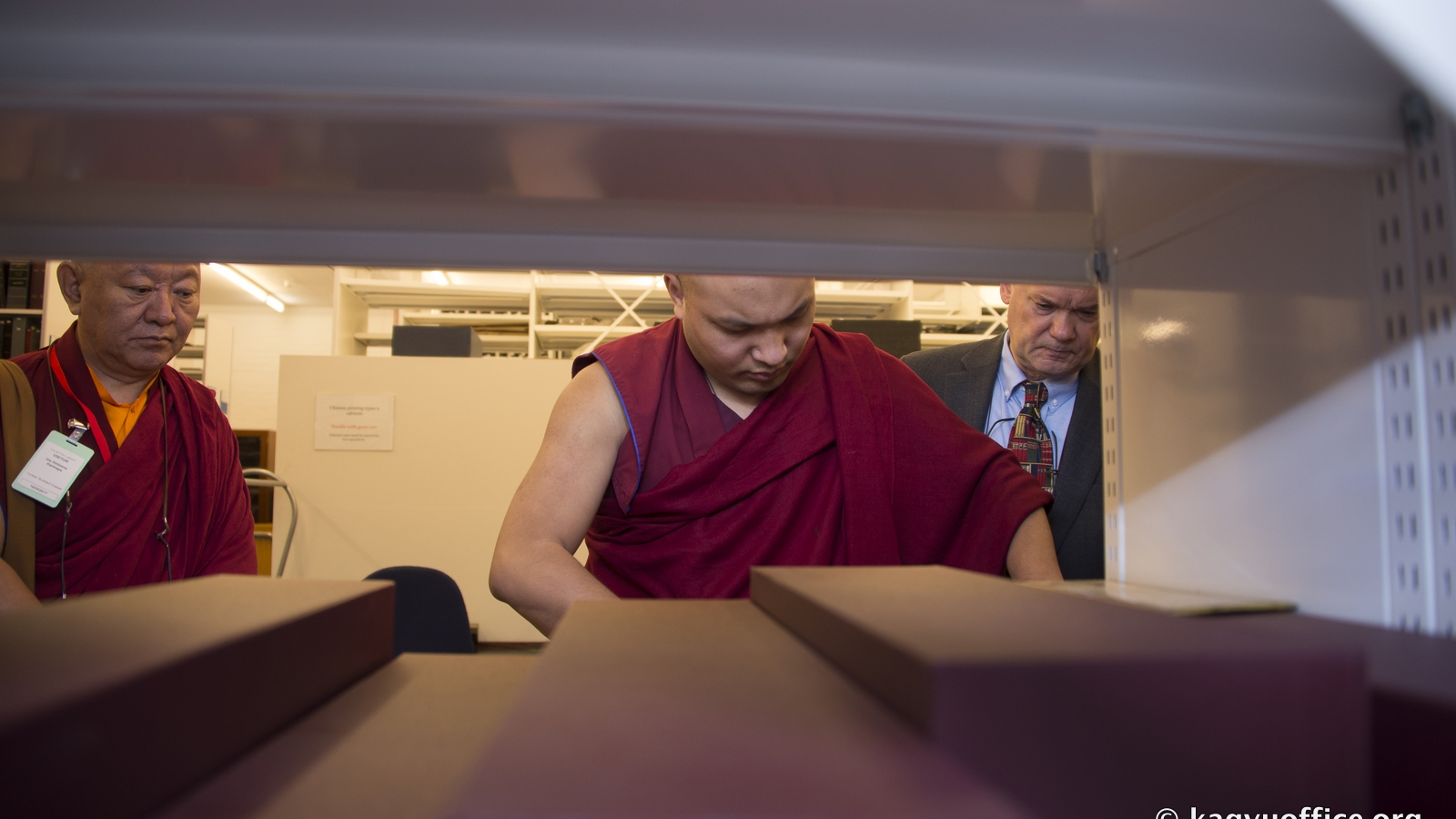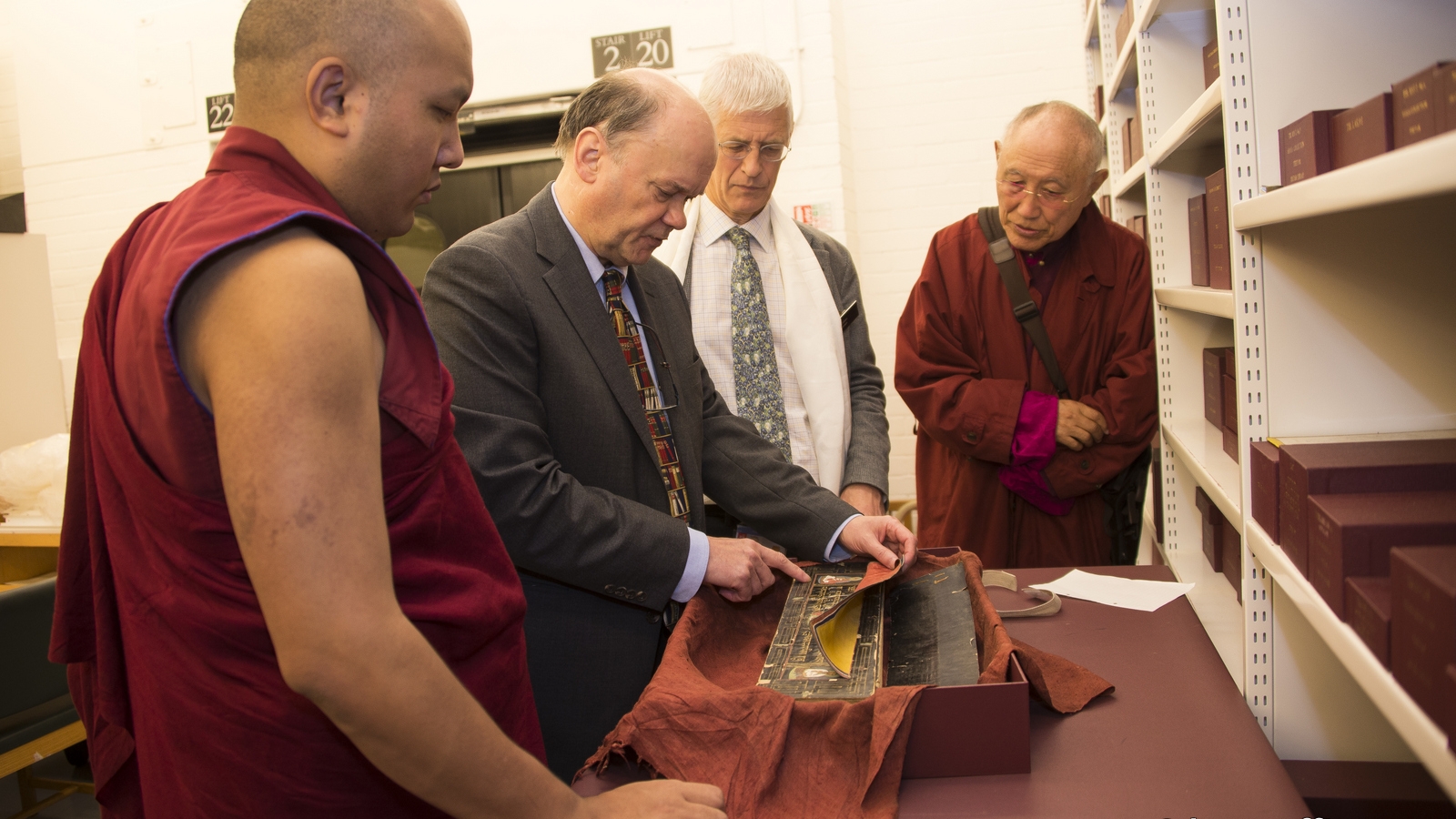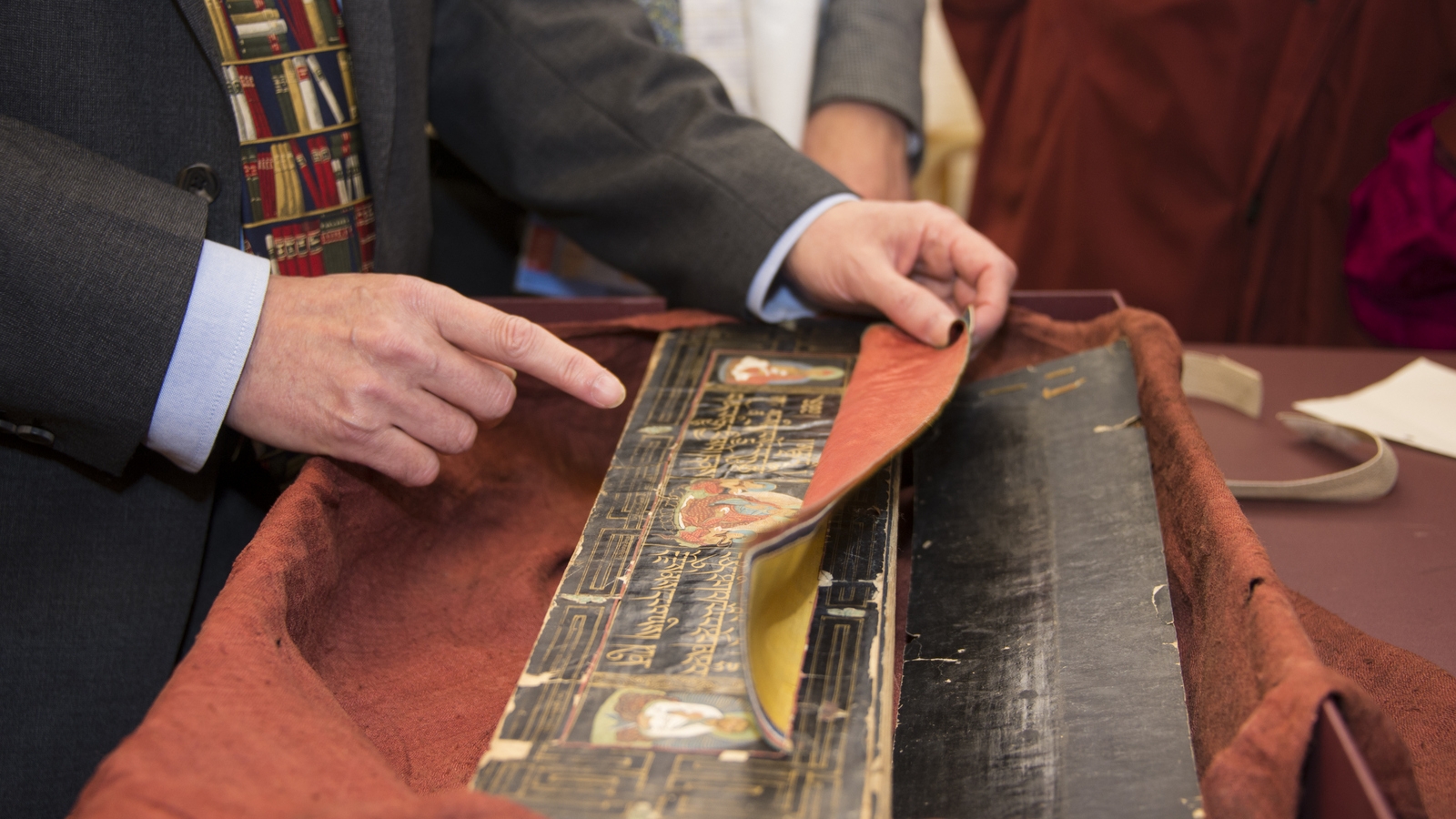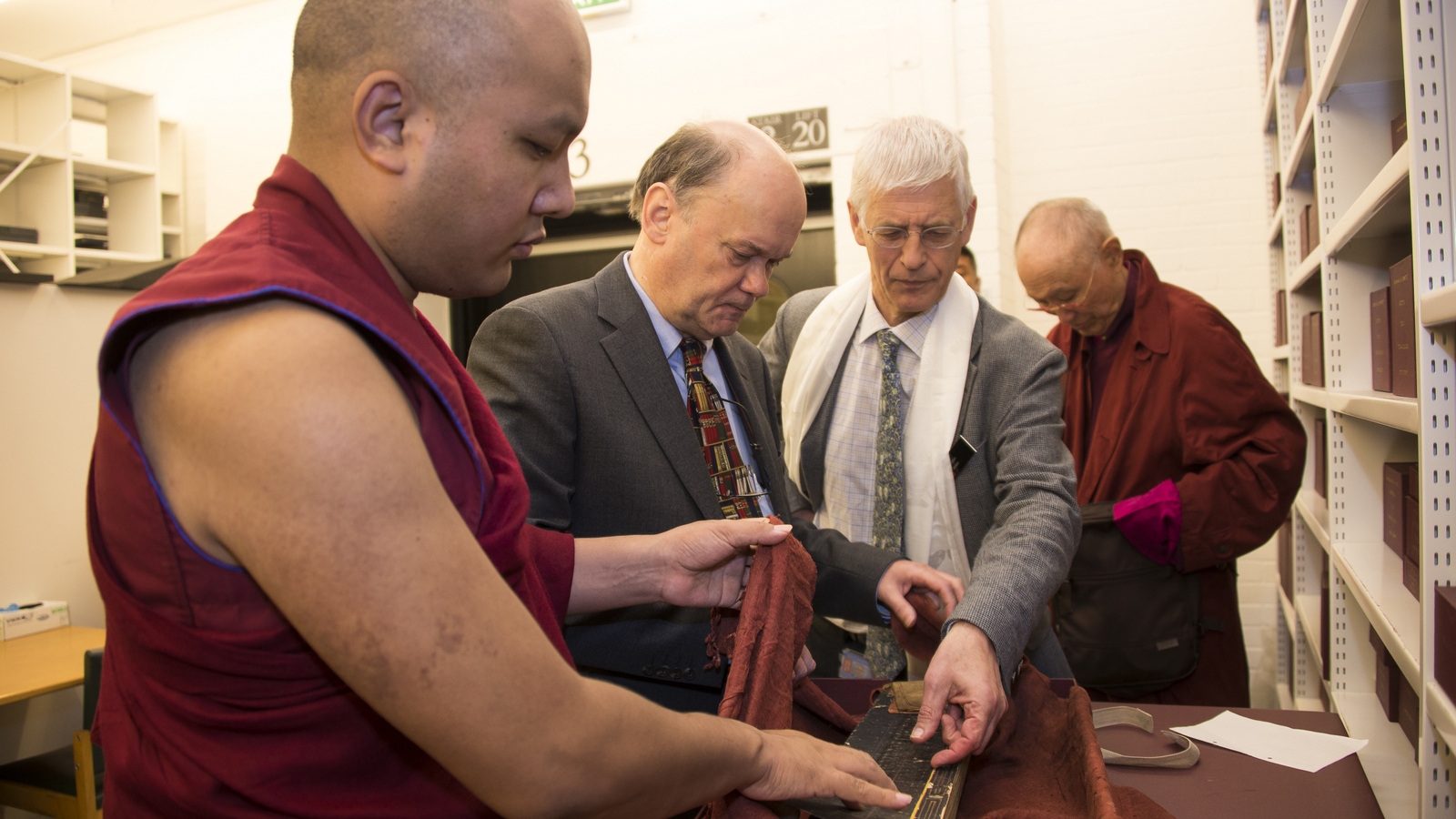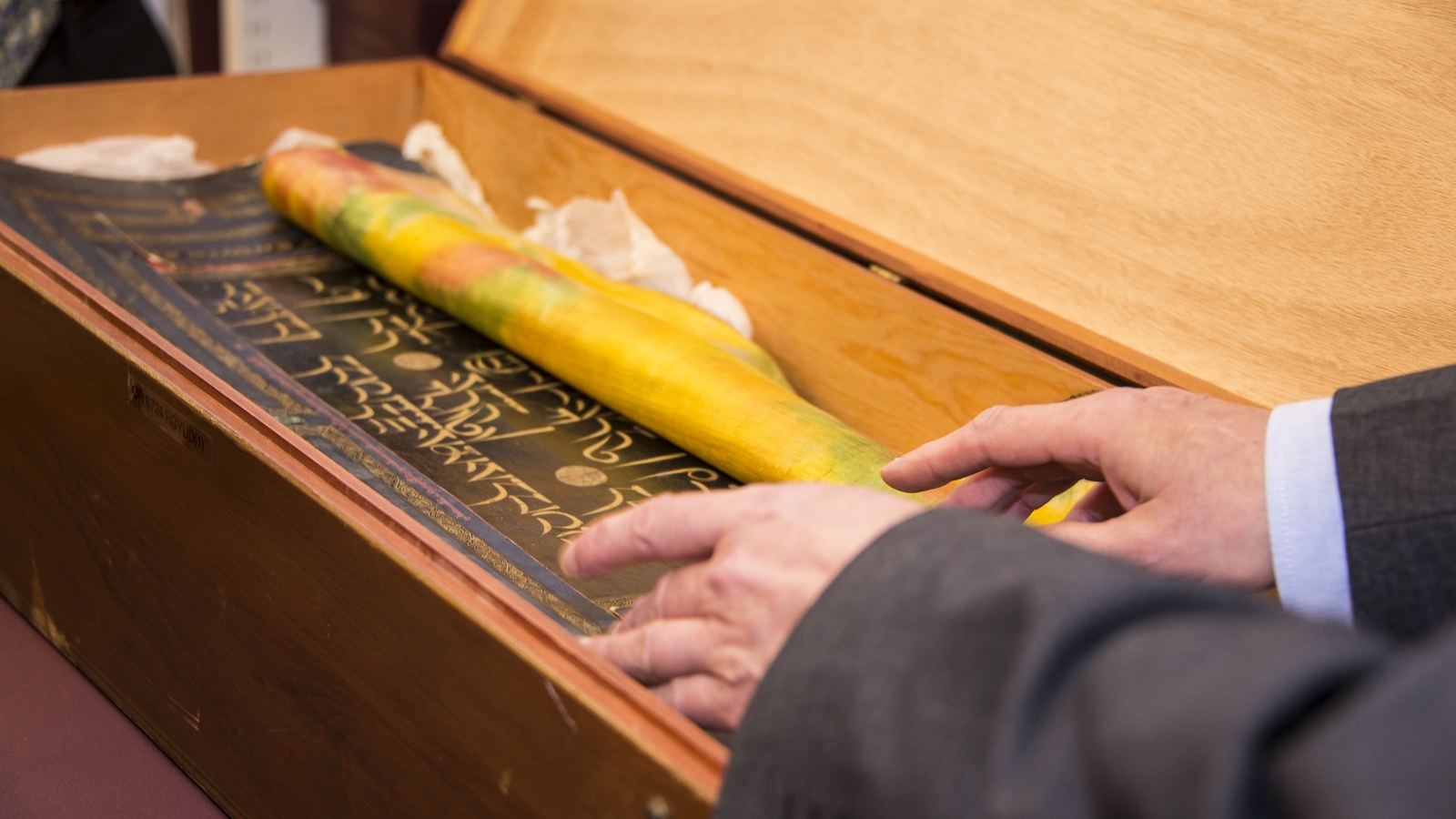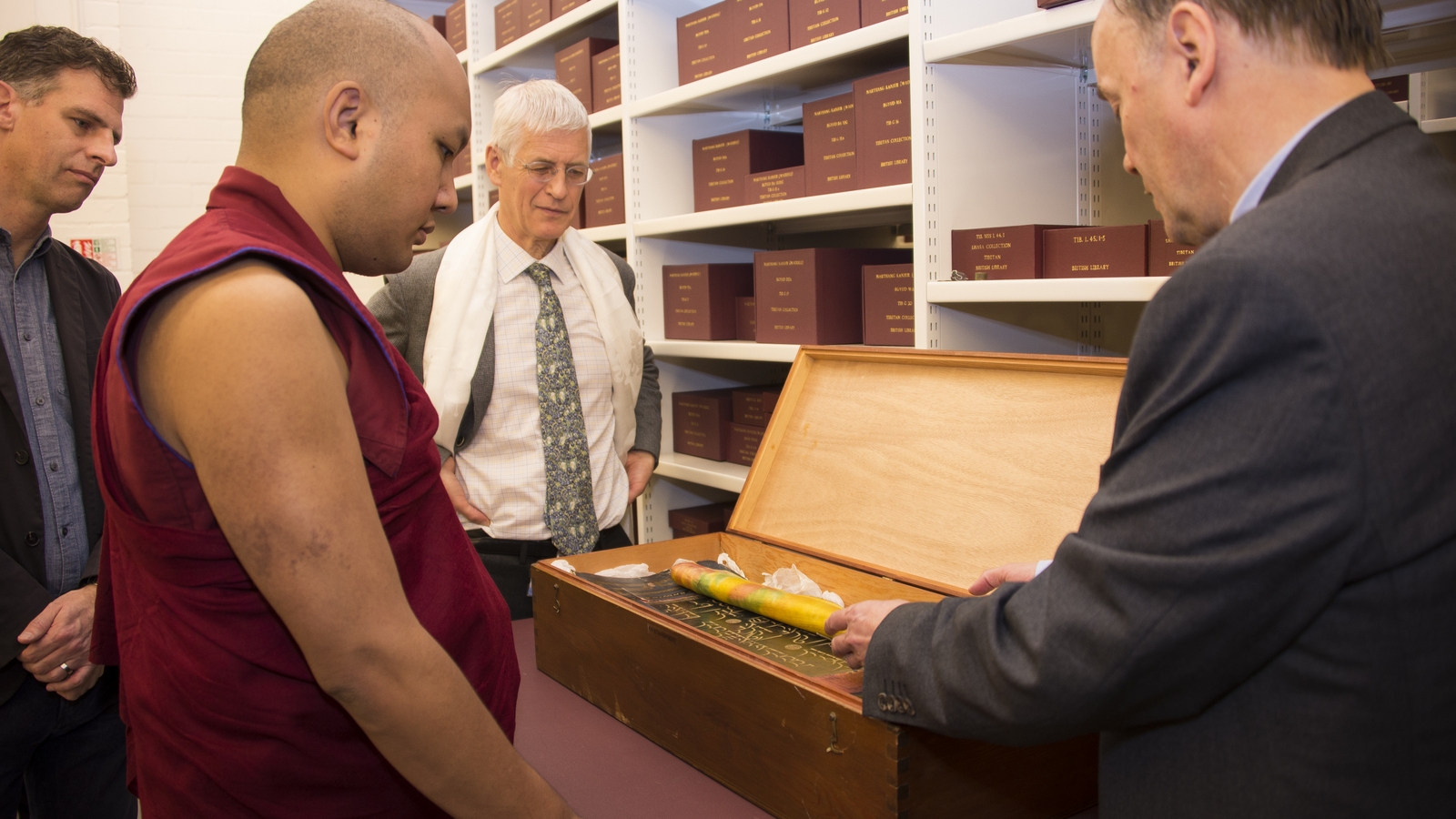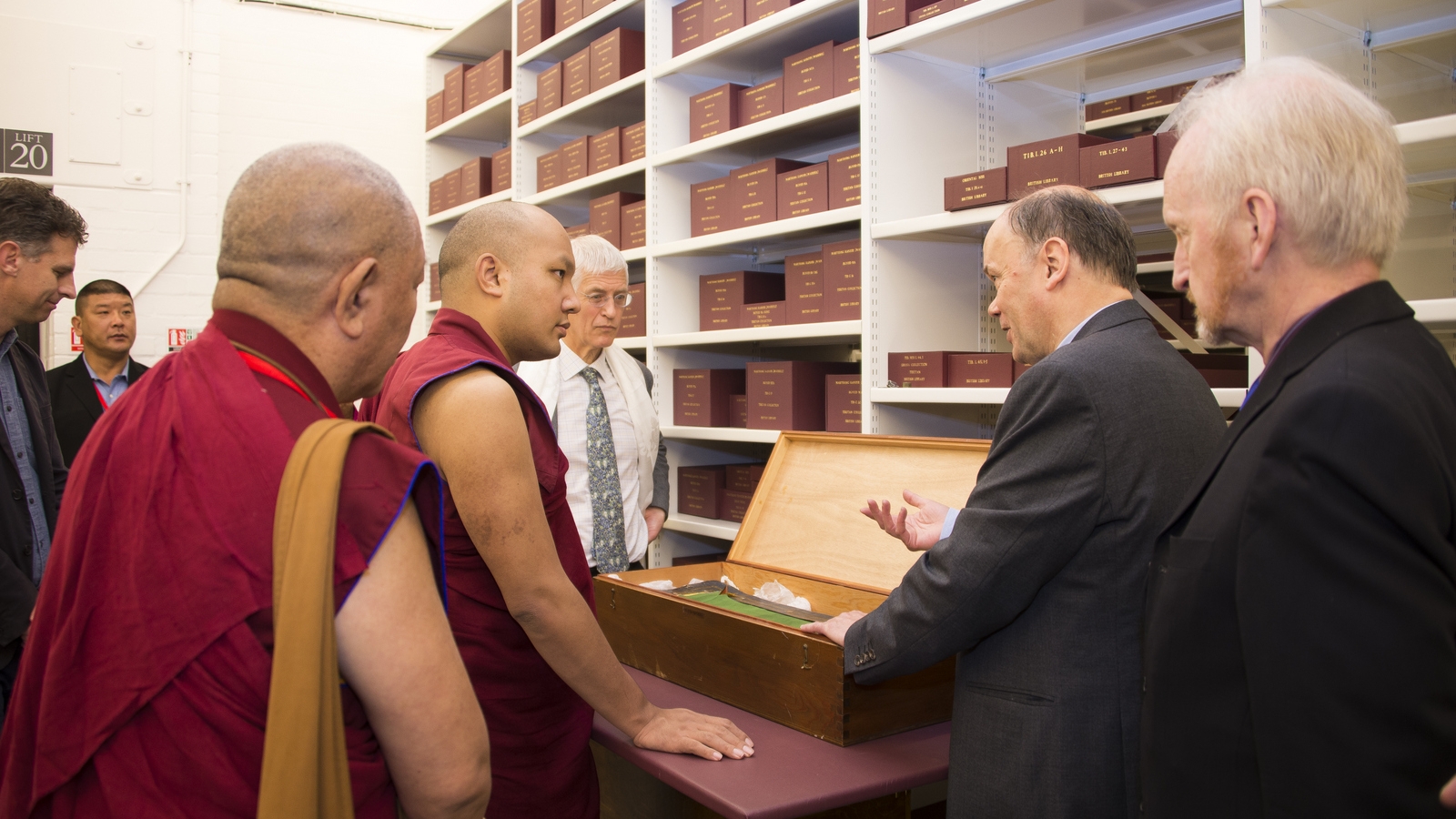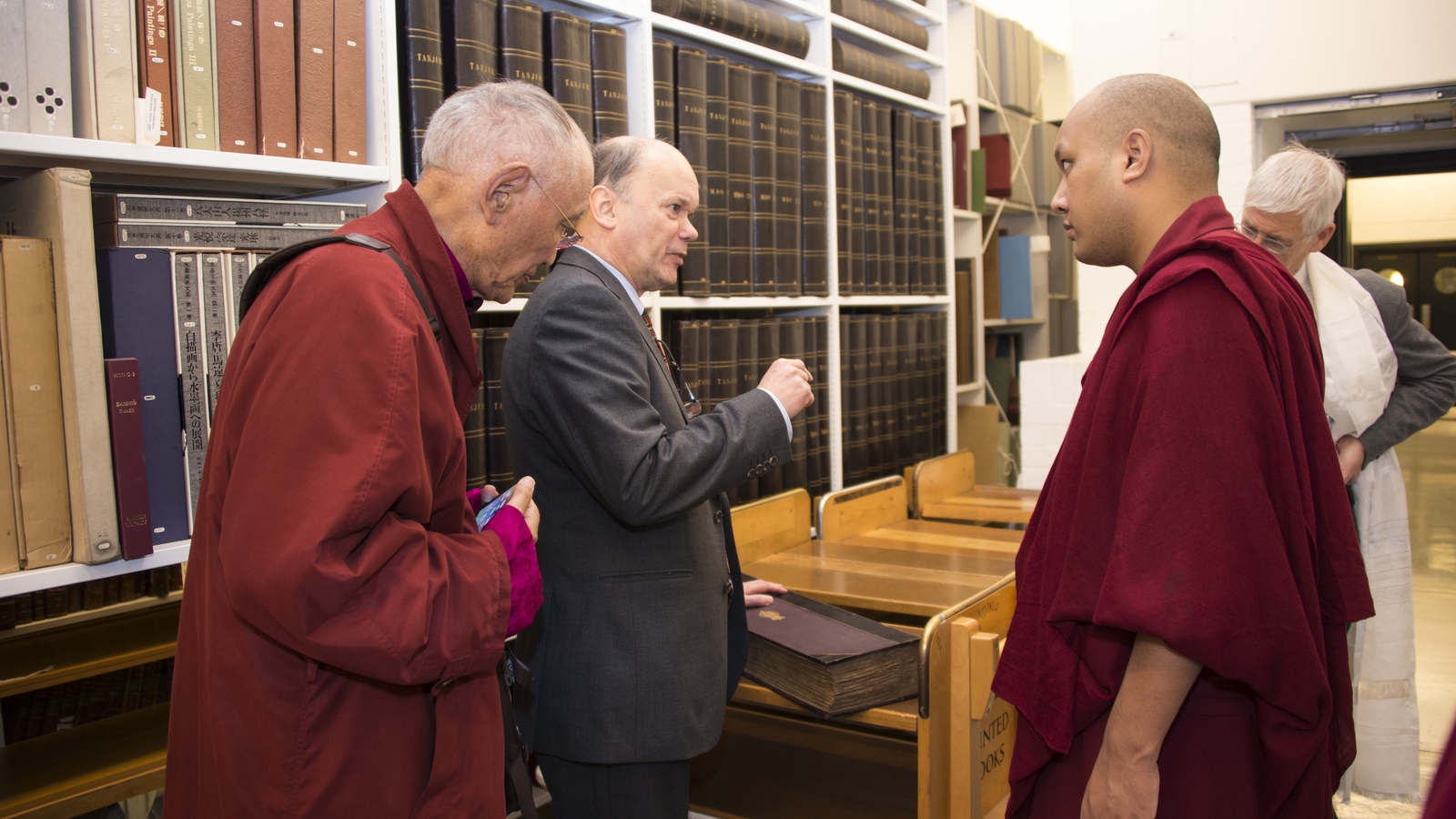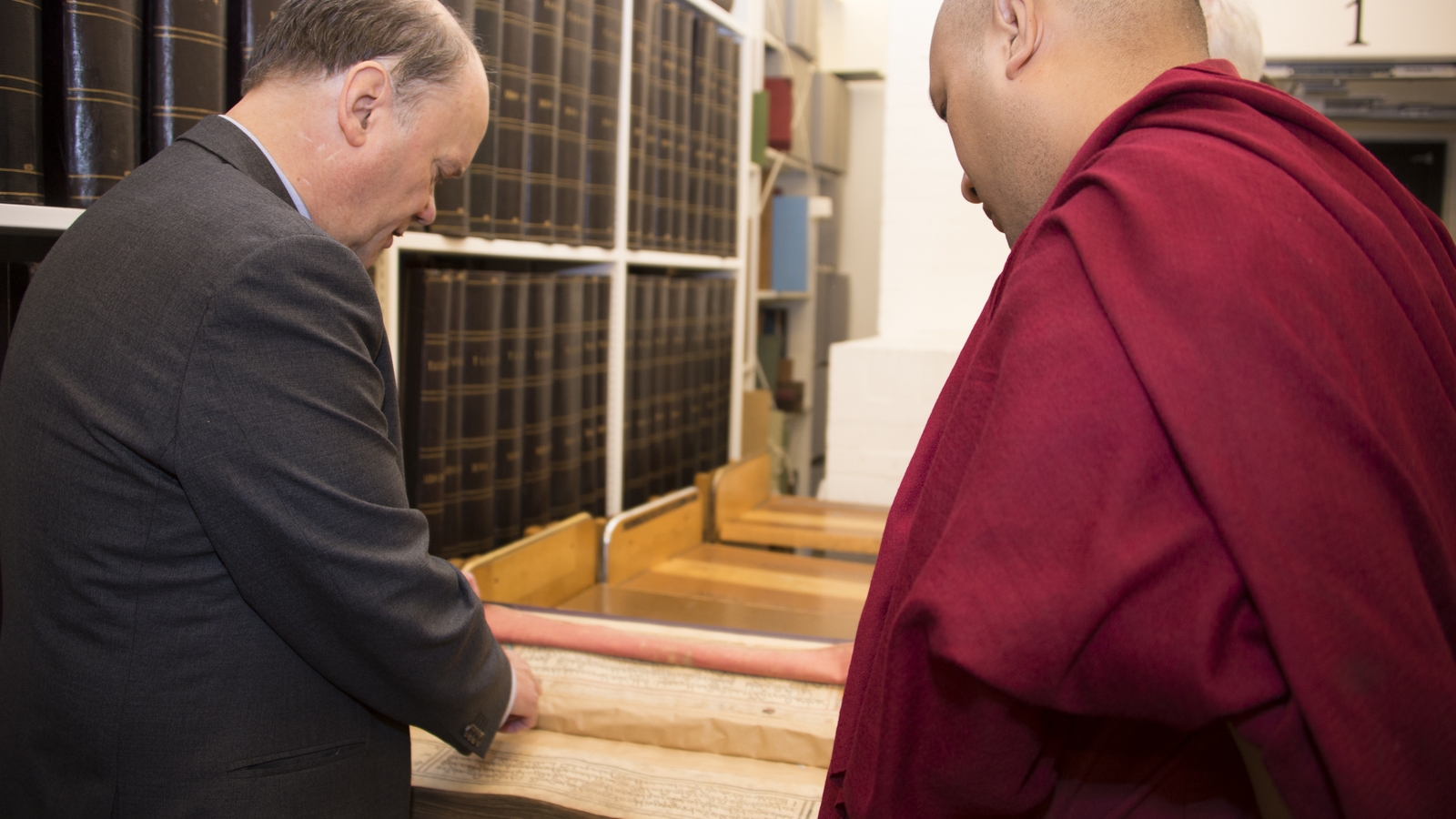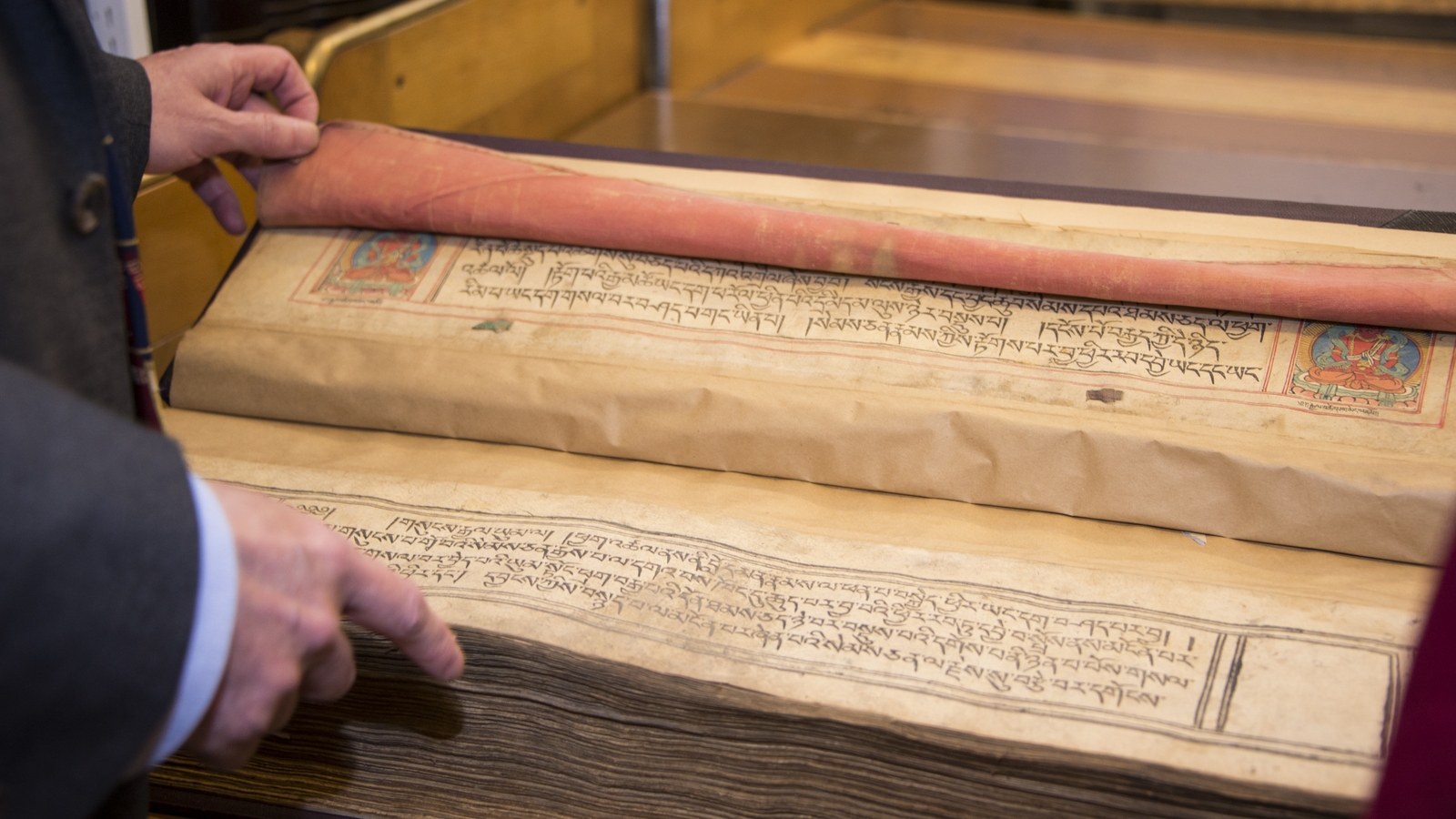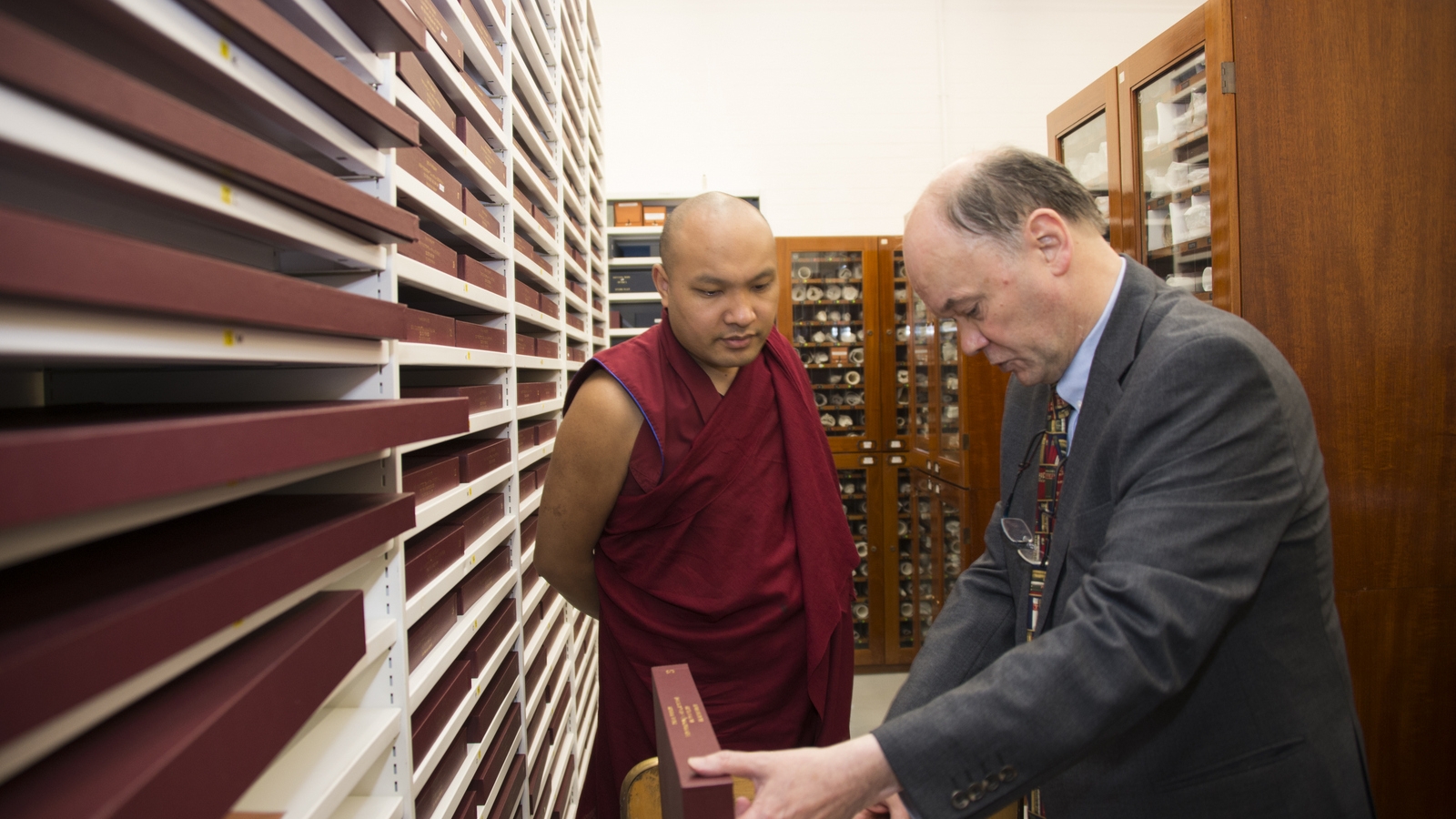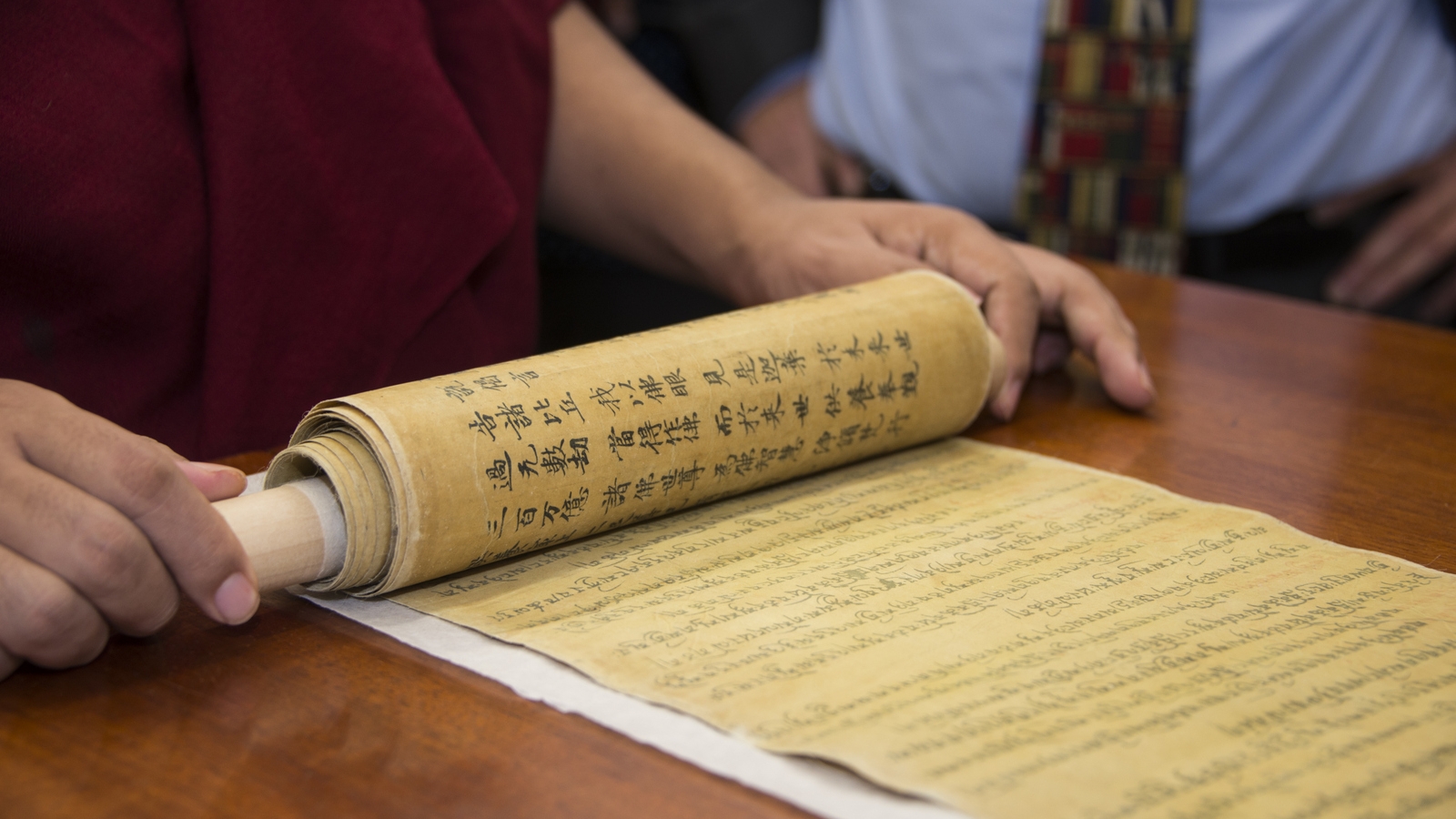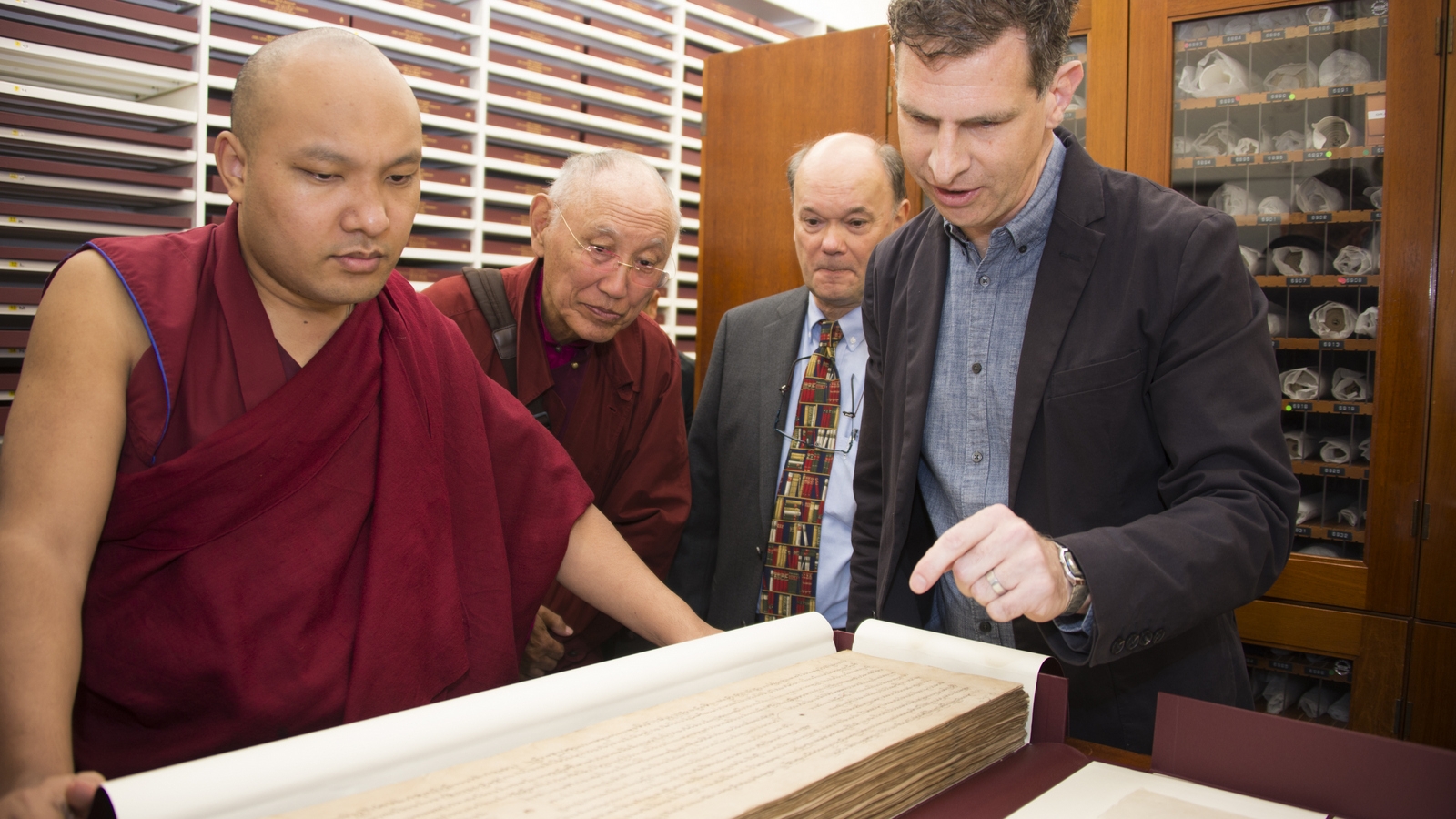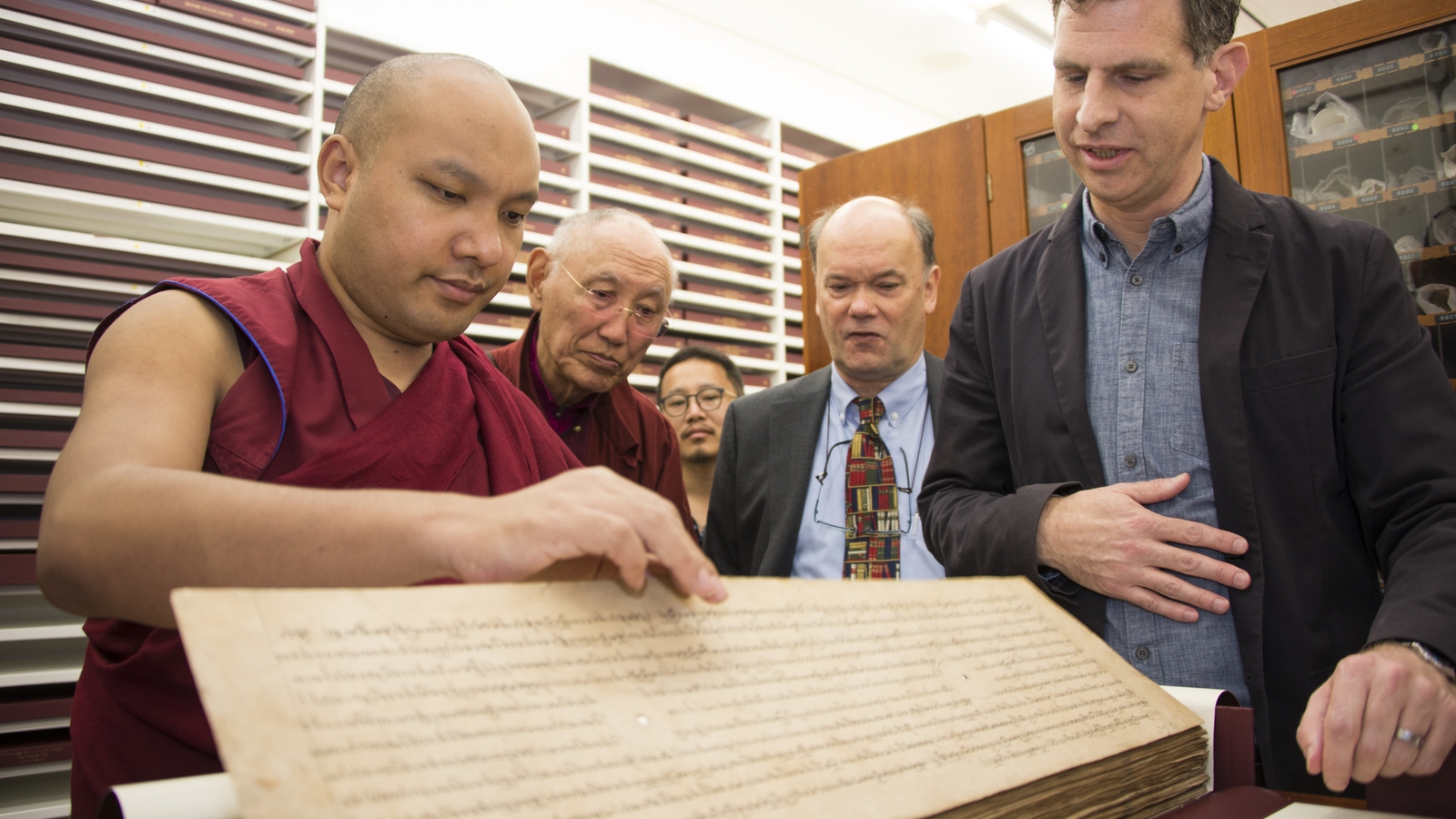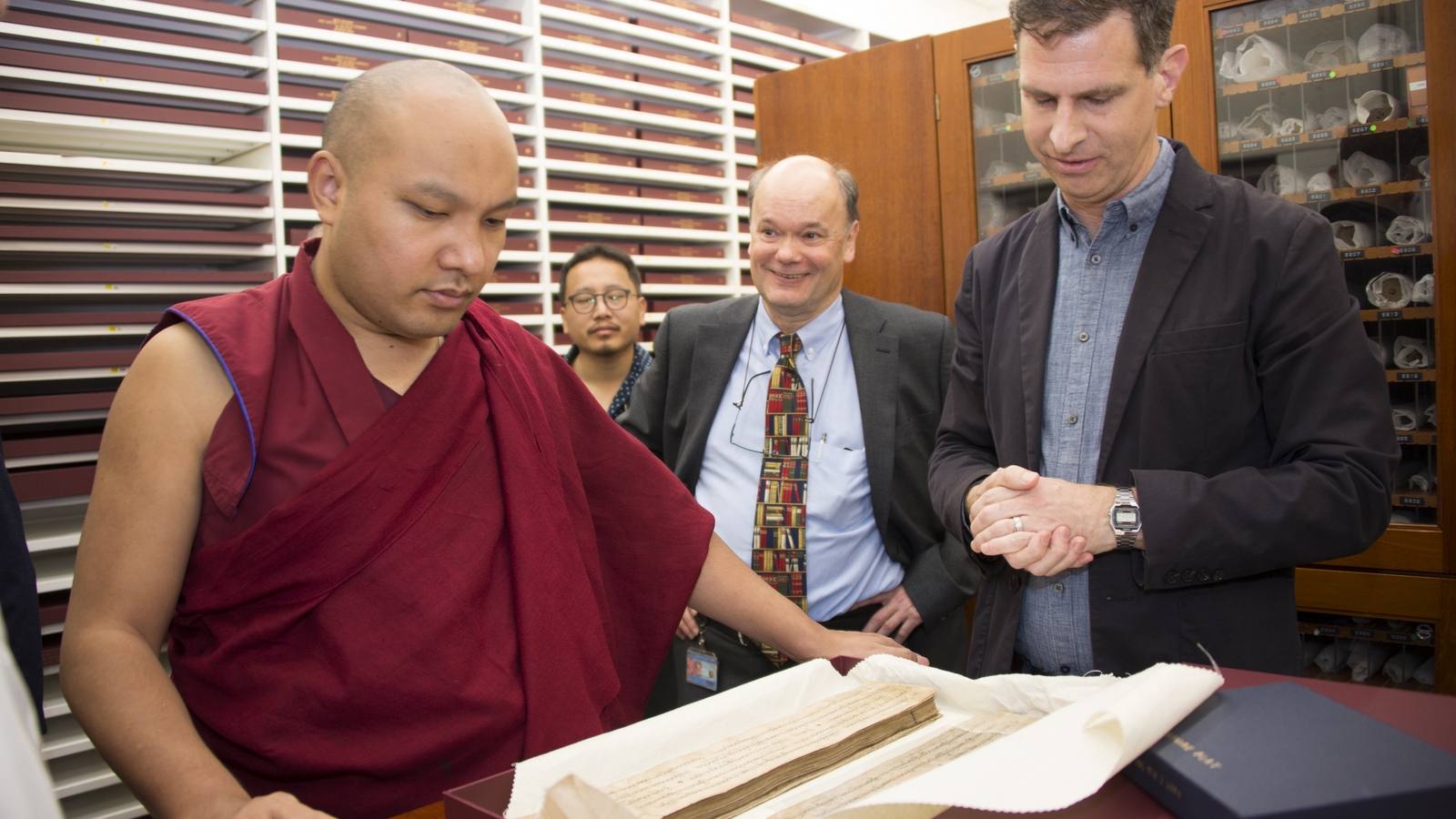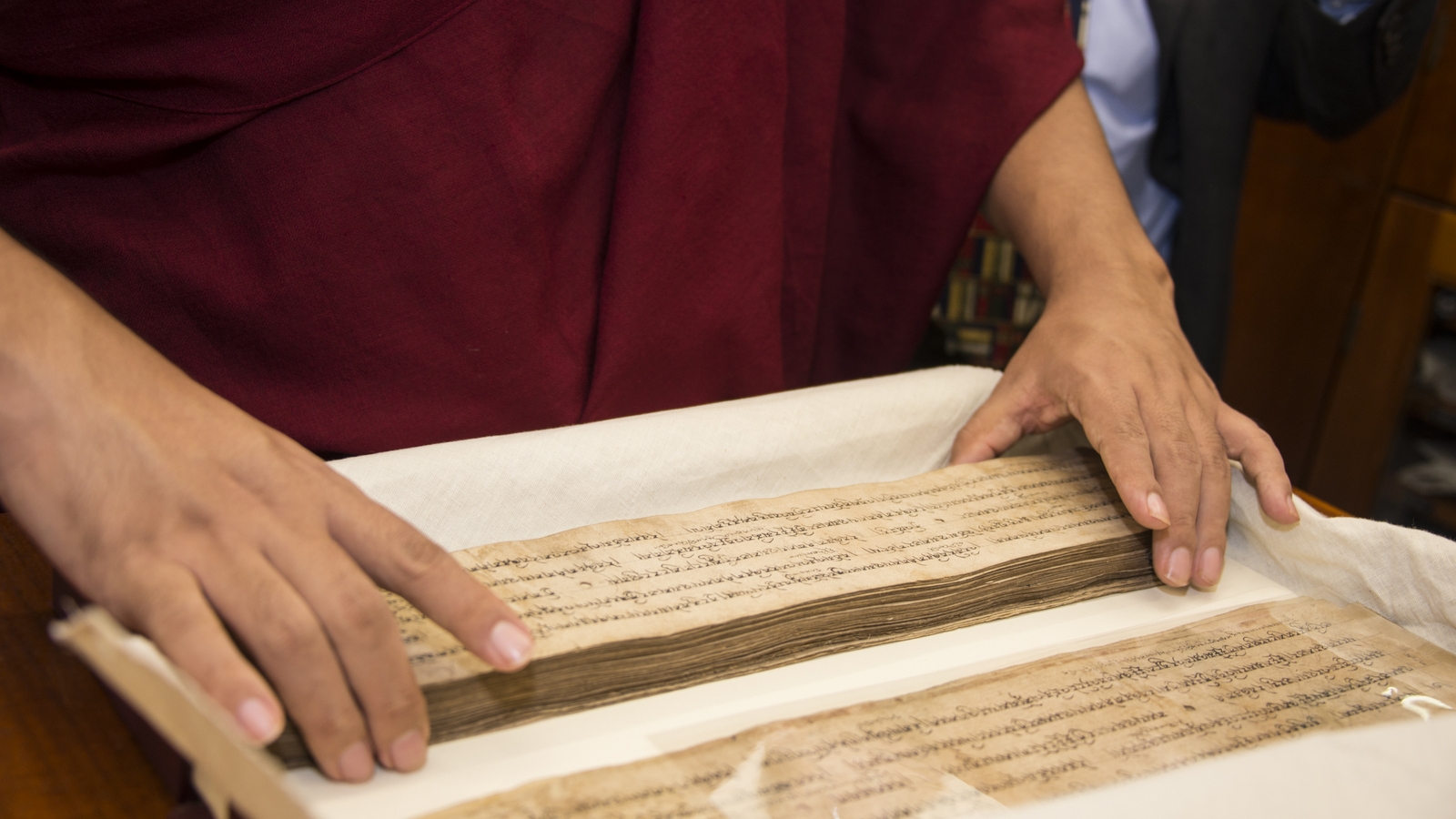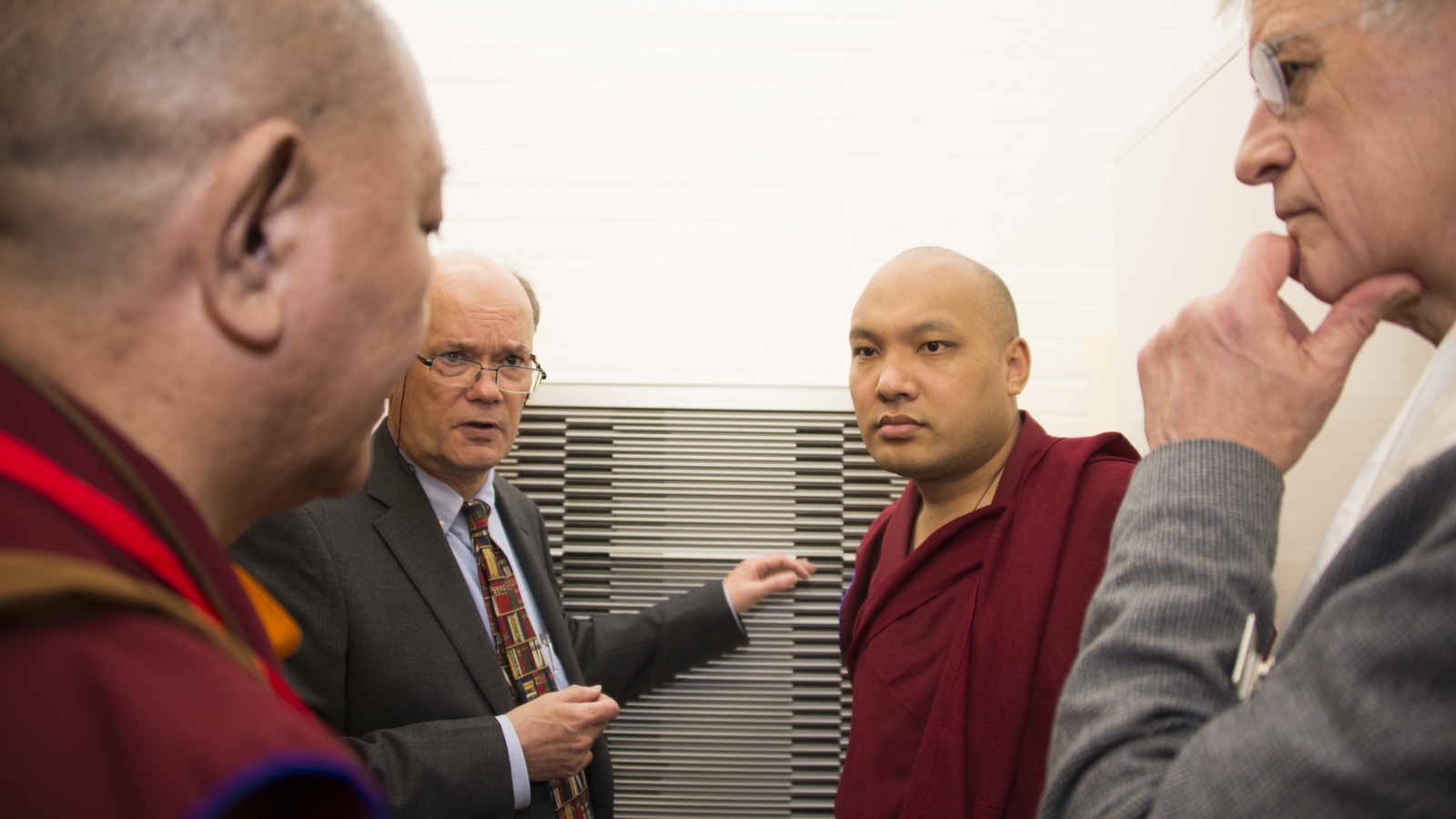May 19, 2107 – London, England
Following the footsteps of his predecessor, the Sixteenth Karmapa who visited the Library fifty years ago, the 17th Karmapa, Ogyen Trinley Dorje, traveled this morning to the British Library. As the national library of the United Kingdom, it is the second largest library in the world by number of items catalogued, holding well over 150 million articles from many countries. Among these, of great interest to His Holiness were the famous Dunhuang texts of the Stein Collection and some 2,700 blockprints and 850 manuscripts in Tibetan, among them the 16th Karmapa’s edition of the Derge Kangyur and Tengyur.
On this special tour, the Karmapa was accompanied by Chime Rinpoche, who had worked in the British Library for fourteen years as curator of the Tibetan collection and welcomed the Sixteenth Karmapa to England. Guided by Kristian Jensen, Head of Collections, and Burkhard Quessel, Curator of the Tibetan Collection, the Karmapa and a small entourage descended two stories to the underground floor of the Library, which holds the oriental and Tibetan collections.
Here, the Karmapa was invited into the carefully guarded Strong Room containing the precious Dunhuang texts. After viewing these, he also saw a beautifully illustrated manuscript combining Milarepa’s life story and his 100,000 Songs, which belonged to the Taklung Kagyu tradition. Based on the Third Karmapa’s life story of Milarepa, it quoted an earlier life story by Sangye Ö, which the Karmapa also knew about. This text and a work on mahamudra, dzogchen, and madhyamaka by Kathok Yeshe Dechen were copied on to a UBS stick and offered to His Holiness for his personal collection. Among other documents, he looked at the earliest known Buddhist text, the content taken mainly from the Pali canon, which was written on birch bark and found in a clay pot in Afghanistan.
The Karmapa then came back up to the first floor and toured a stunning exhibit, the Treasures of the British Library. He looked with great interest at the texts, illuminated in gold and brilliant color, embodying the precious heritage of many religious traditions. The first text was the earliest complete manuscript of the New Testament; from the Jewish tradition, a golden Haggadah for Passover eve; from Islam, a kufic Qu’ran; from Nepal a Hindu Sanskrit text with gold letters on a black background; a Burmese life of the Buddha, a Japanese edition of the Kannon Sutra, and the Heart Sutra in gold with illustrations in the shape of a bodhi leaf.
The exhibit on printing noted that the earliest surviving documents are Buddhist and showed a prayer sheet from the Dunhuang caves and texts printed on moveable type from China. The Karmapa also has taken a great interest in printing and published a splendid and elegant edition of the Jaing Kangyur, the first kangyur to be printed in the area of Tibet. Perhaps one day it will find its way in the British Library’s collection. After viewing the Magna Carta and the Gutenberg Bible, sources of revolution in the worlds of politics and information technology, the Karmapa returned to his temporary home in London.


